Oberon Solar Project Approved
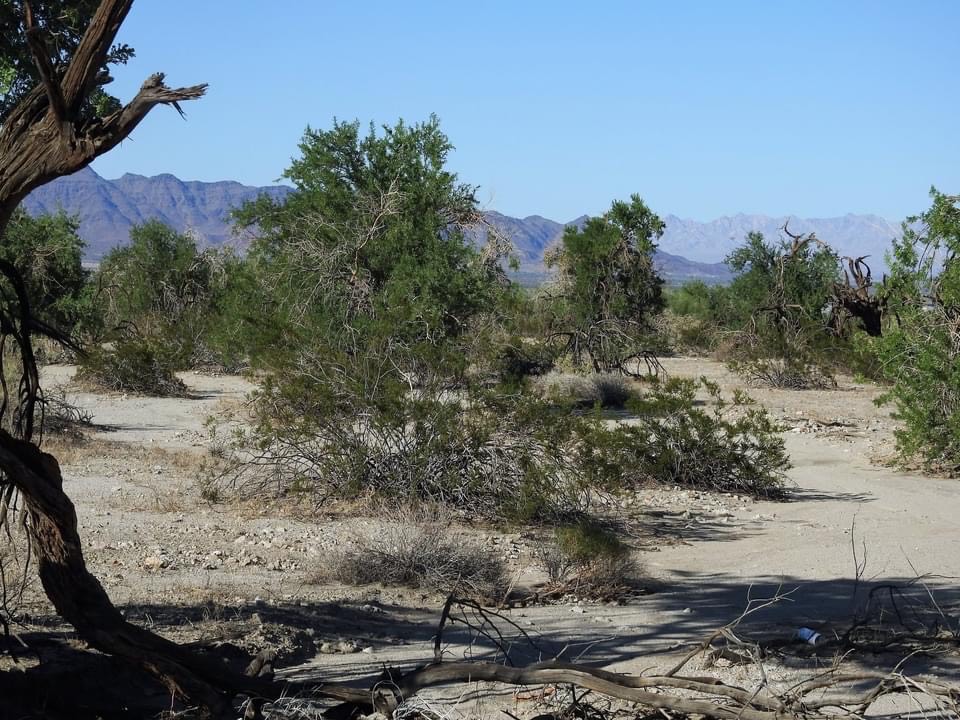
^These old-growth desert ironwood trees are threatened by habitat fragmentation, weed invasion, and even some taken down to make room for a solar developer's project in Riverside County, Colorado Desert, California. Some of these trees are 30-35 feet tall. Site visit in September 2021 on the Oberon Solar Project site, Chuckwalla Valley. Photo: Kevin Emmerich.
January 13, 2022 - Palm Springs, CA - The Bureau of Land Management (BLM) approved the 2,700-acre Oberon Solar Project, in Riverside County, California Desert. The project would be rated at up to 500 megawatts (MW), with 200 MW of Lithium-ion battery storage.
This is one of the first new utility-scale solar projects approved under the Desert Renewable Energy Conservation Plan (DRECP) that was not grandfathered in from older applications, and thus is significant in setting a precedent for how future solar projects are negotiated and approved under the DRECP. In spite of BLM's new mitigation measures negotiated between the contentious environmental assessment and final decision under the DRECP, this project will still kill a significant amount of desert ironwood trees--an imperiled vegetation community in California. Years ago we proposed a Distributed Energy Resource Alternative to the DRECP, but this was not considered. Now we are seeing the consequences to rare species and intact ecosystems of allowing utility-scale energy build-out on intact desert public lands.
See the BLM press release here:
https://www.blm.gov/press-release/blm-approves-oberon-solar-project
About 600 acres of designated Critical Habitat for the desert tortoise has been approved by the Bureau of Land Management for development for the Oberon Solar Project south of Joshua Tree National Park, CA. The habitat is located in desert dry wash woodlands.
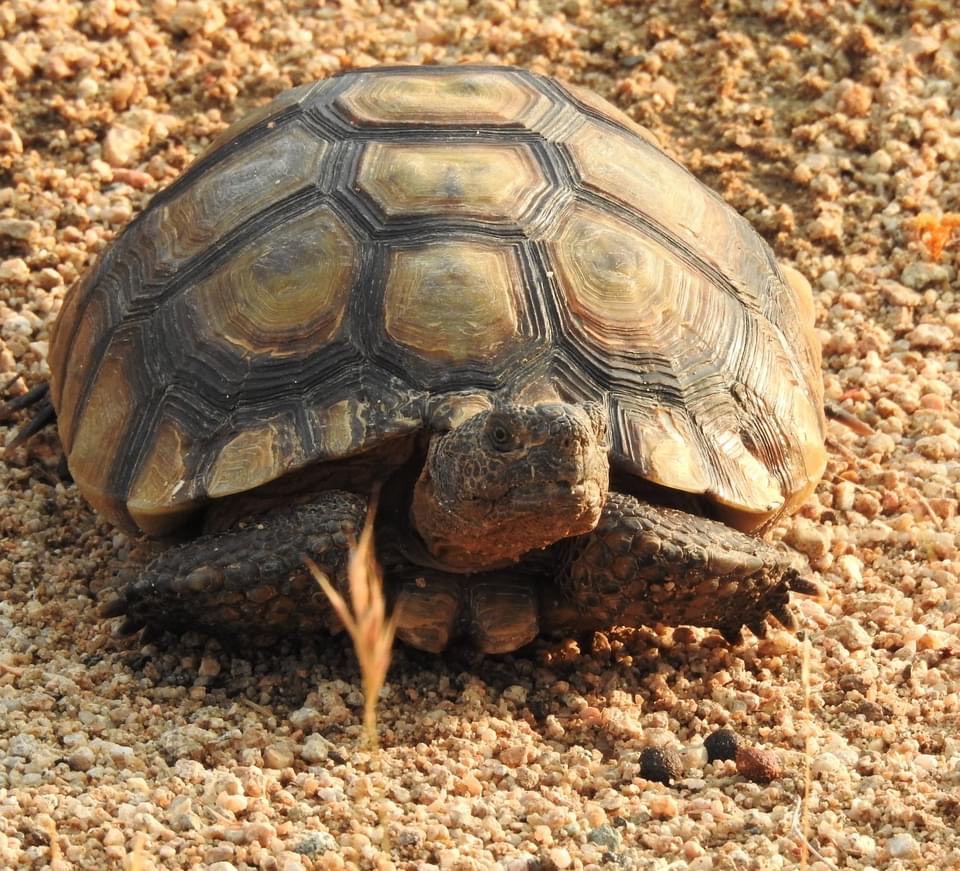
^The federally threatened Mojave desert tortoise is declining range-wide. Tortoises eat the fallen seed-pods of desert ironwood trees, and thereforeironwood groves in Chuckwalla Valley make excellent tortoise habitat.
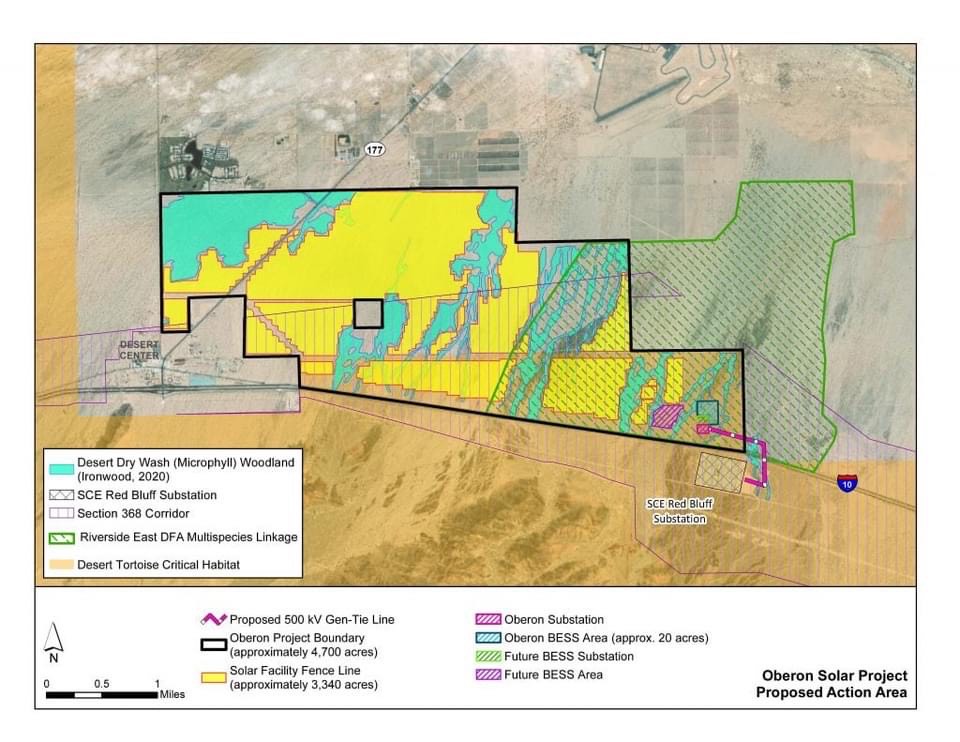
^Map showing desert dry wash communities, dominated by ironwood trees, that will be impacted by this project, which the developer has been aggressively pursuing.
We thank Ruth Nolan of Palm Desert, Professor of English at College of the Desert and California Indian Nations College, for her heart-felt opinion piece in the Desert Sun: https://www.desertsun.com/story/opinion/contributors/valley-voice/2022/01/21/desert-center-solar-farm-would-devastate-forests-and-native-sites/6581651001/
Check out better renewable energy solutions that the Investor-Owned Utilities do not like (because they do not profit as much), such as parking lot solar canopies which need to be much more utilized before we destroy high-value California Desert ecosystems: https://www.greenbiz.com/article/why-putting-solar-canopies-parking-lots-smart-move
Public Online Meeting on the Oberon Solar Project Environmental Assessment
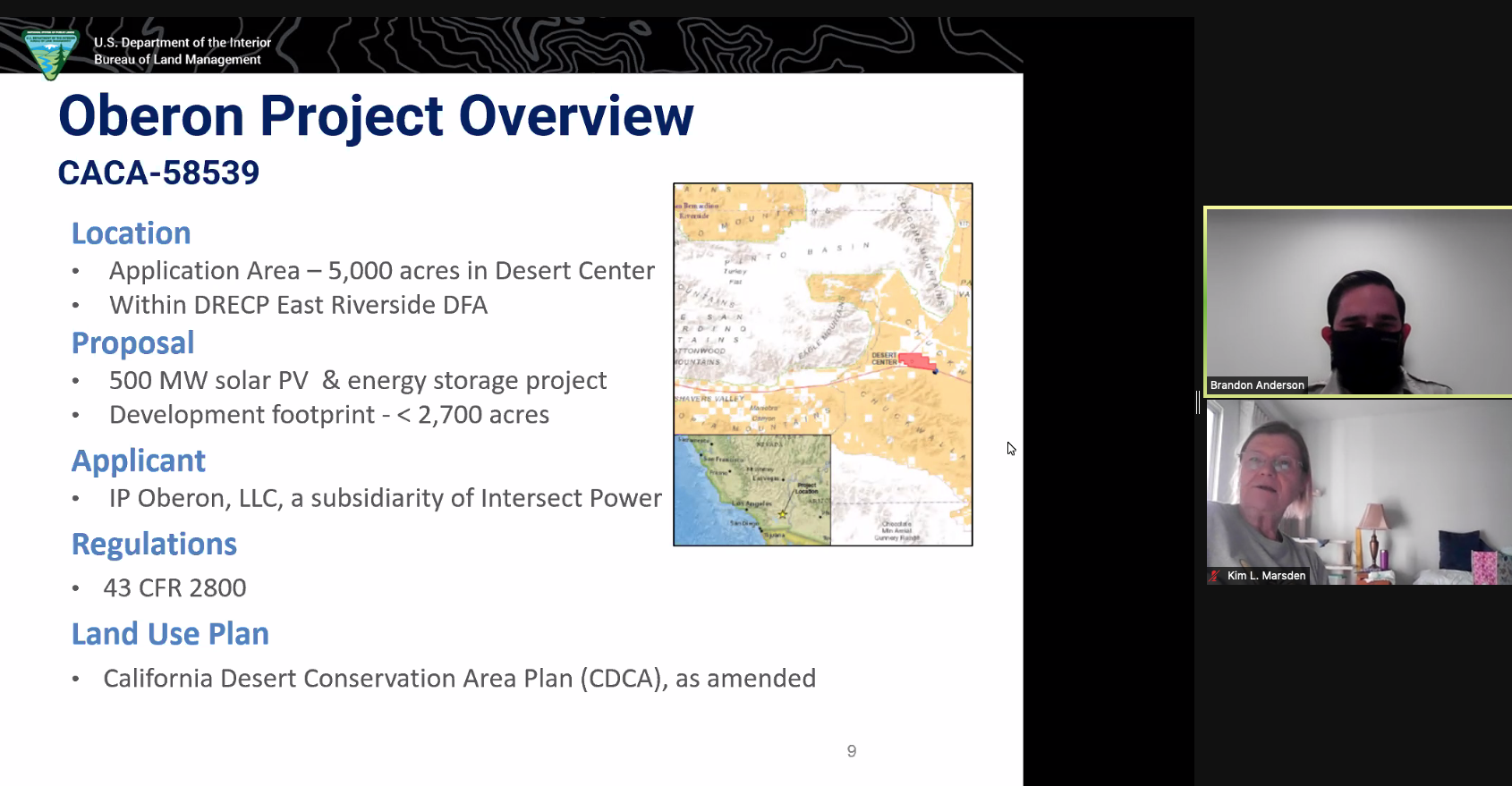
September 8, 2021 - In tonight's Zoom meeting with the Bureau of Land Managemrnt (BLM), the Oberon Solar Project applicant explained that it may not be able to comply with all conservation/mitigation measures directed fro developers wishing to build in designated Development Focus Areas (formerly Solar Energy Zones), as written in the California Desert Conservation (CDCA) Plan as amended. The project does not comply with all the Conservation Management Actions (CMAs) prescribed in the Desert Renewable Energy Conservation Plan (DRECP plan amendment to the CDCA), especially microphyll woodland. The proposed project also does not comply with tortoise exclusion fencing and clearance surve protocolss. Intersect Power stated it needs a Land Use Plan Amendment (LUPA) to maintain its 500 megawatt (MW) project as designed, so will need to impact the microphyll woodland. The company is proposing CMAs. The Proposed action includes wildlife permeable fencing.
Oberon Solar Project is tiering off the DRECP Environmental Impact Statement (EIS) and LUPA. BLM can only approve if there is a finding of no new significant impacts not analyzed in the DRECP EIS. BLM said it developed several project alternatives from feedback received during the scoping period:
Alternative 3 provides a 200-foot buffer around the microphyll woodlan, and would reduce the project to 375 MW.
Alternative 4 avoids desert tortoise critical habitat, which Basin and Range Watch suggested, and also avoids more microphyll. This is called the Conservation Alternative. The project would also be made to avoid the wildlife corridor. 1,600 acres, down to 300 MW.
A Decision Record will be issued by the decision-makers in BLM, and they may select different conservation measures such as wildlife permeable fencing and other features from any of the alternatives.
30 day public comment period. September 14, 2021 is the deadline.
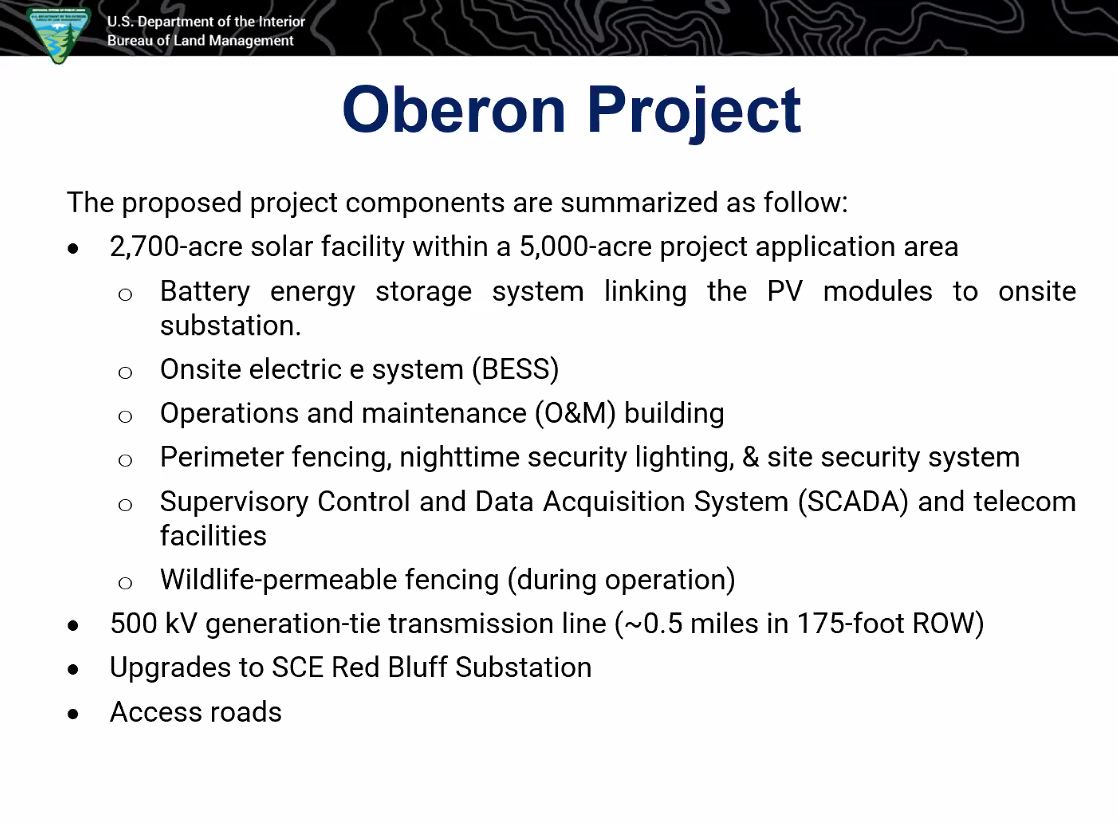
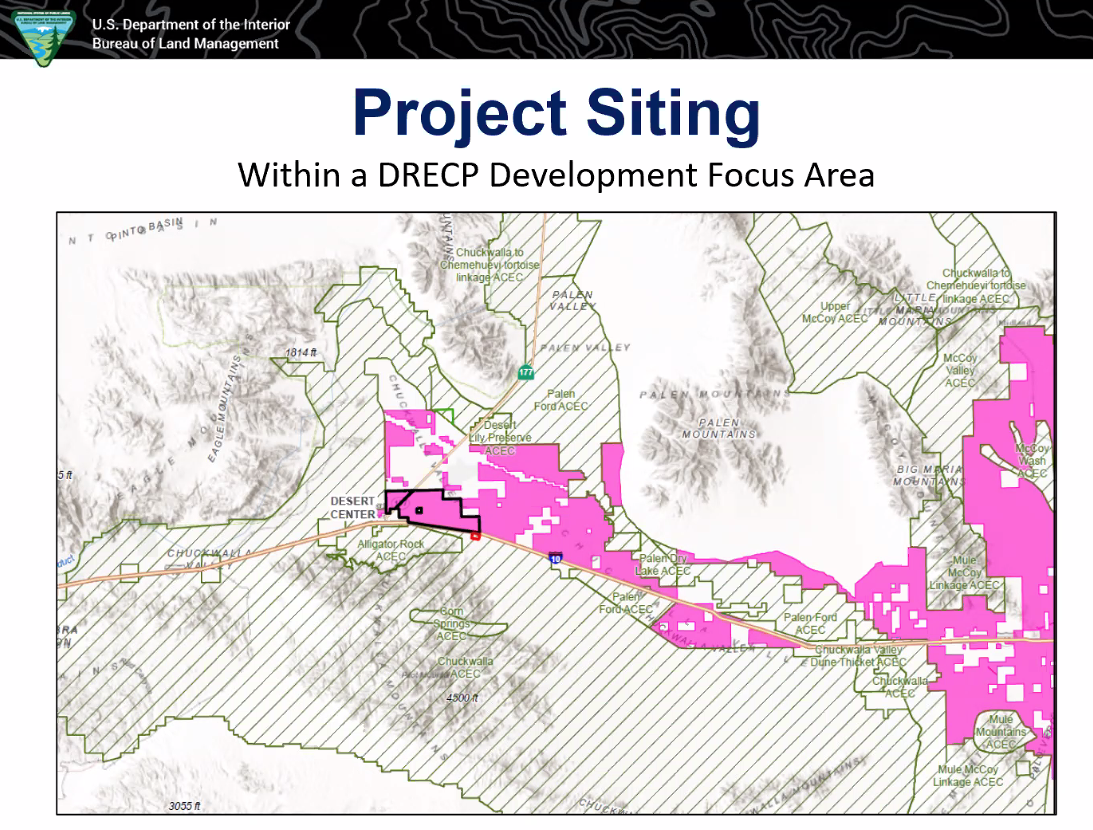
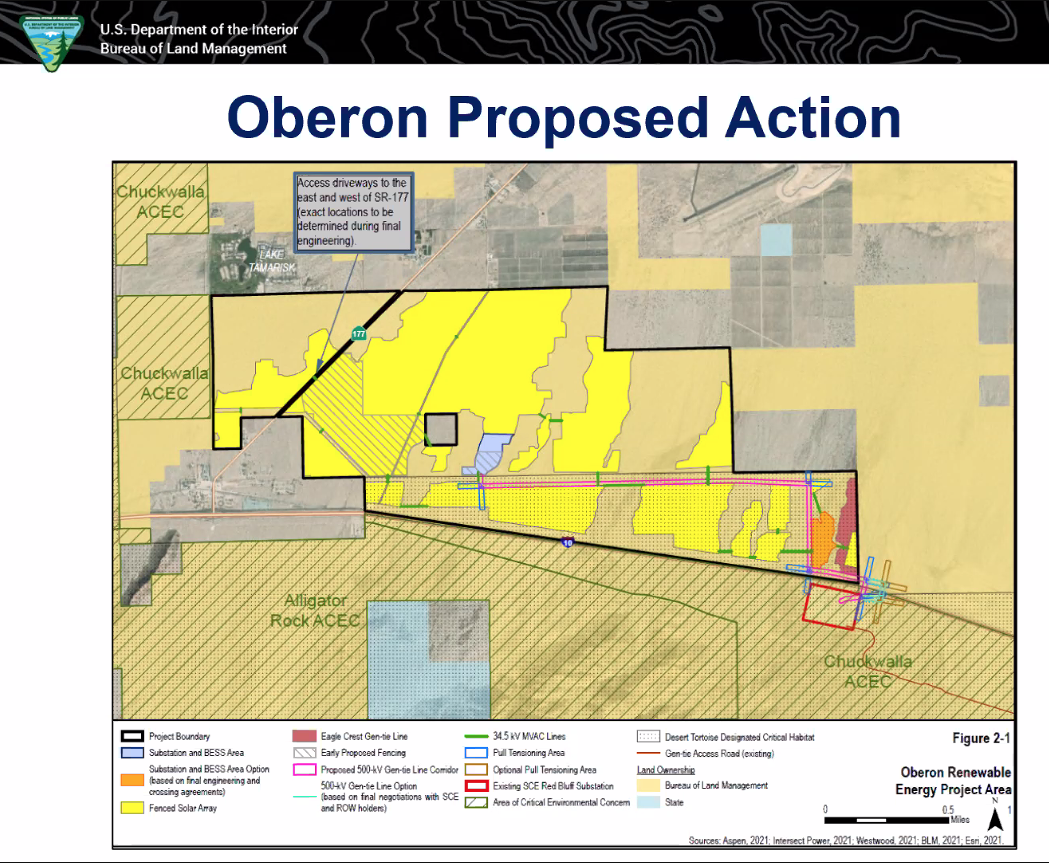
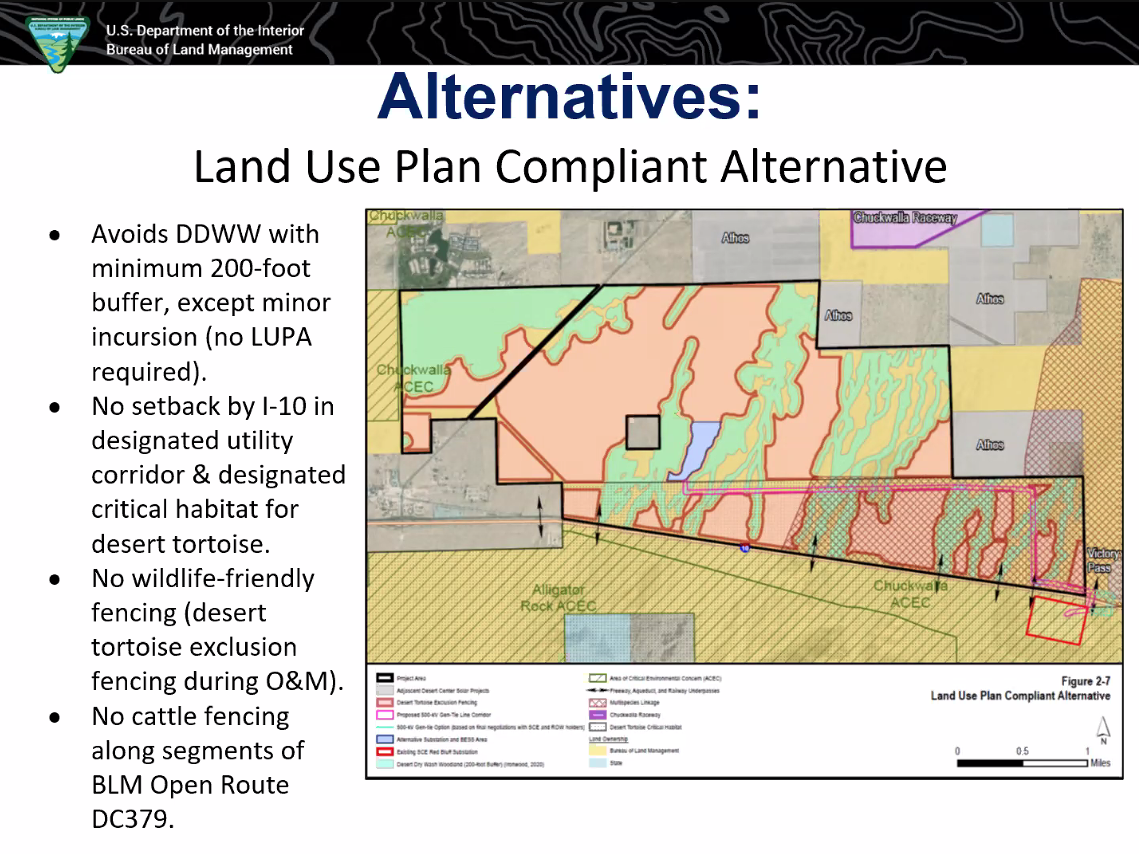
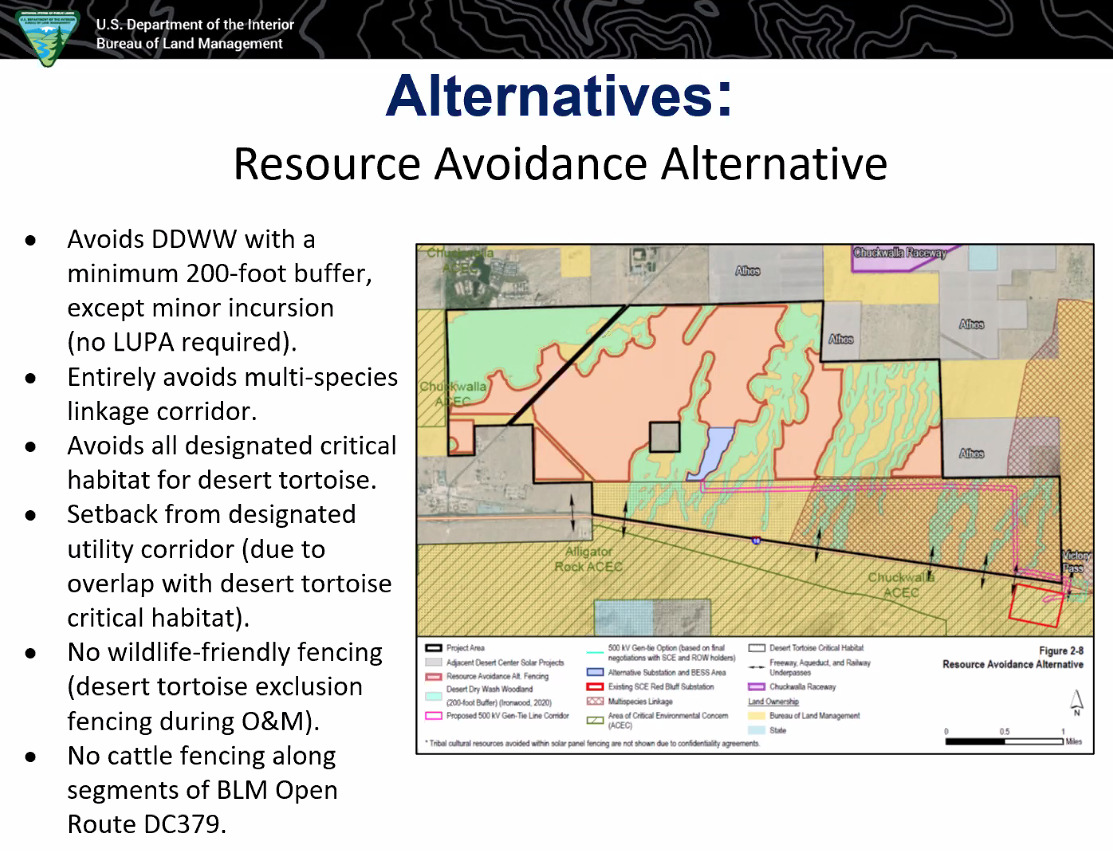
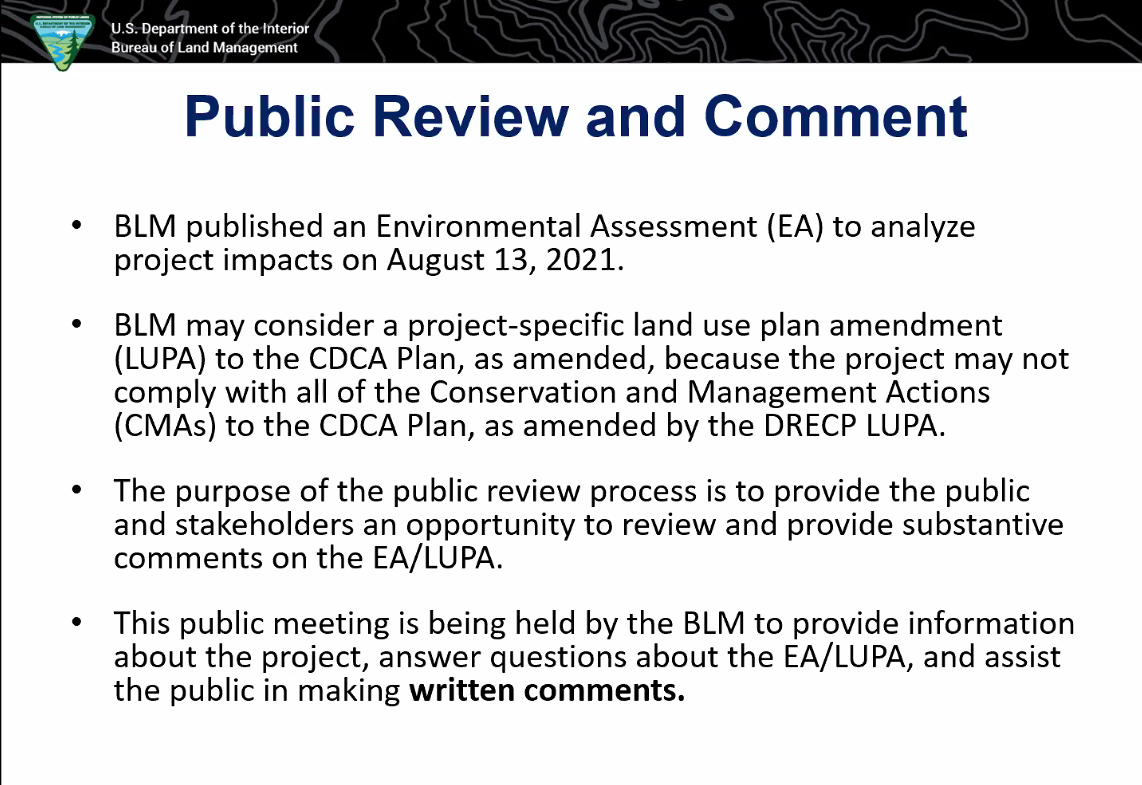
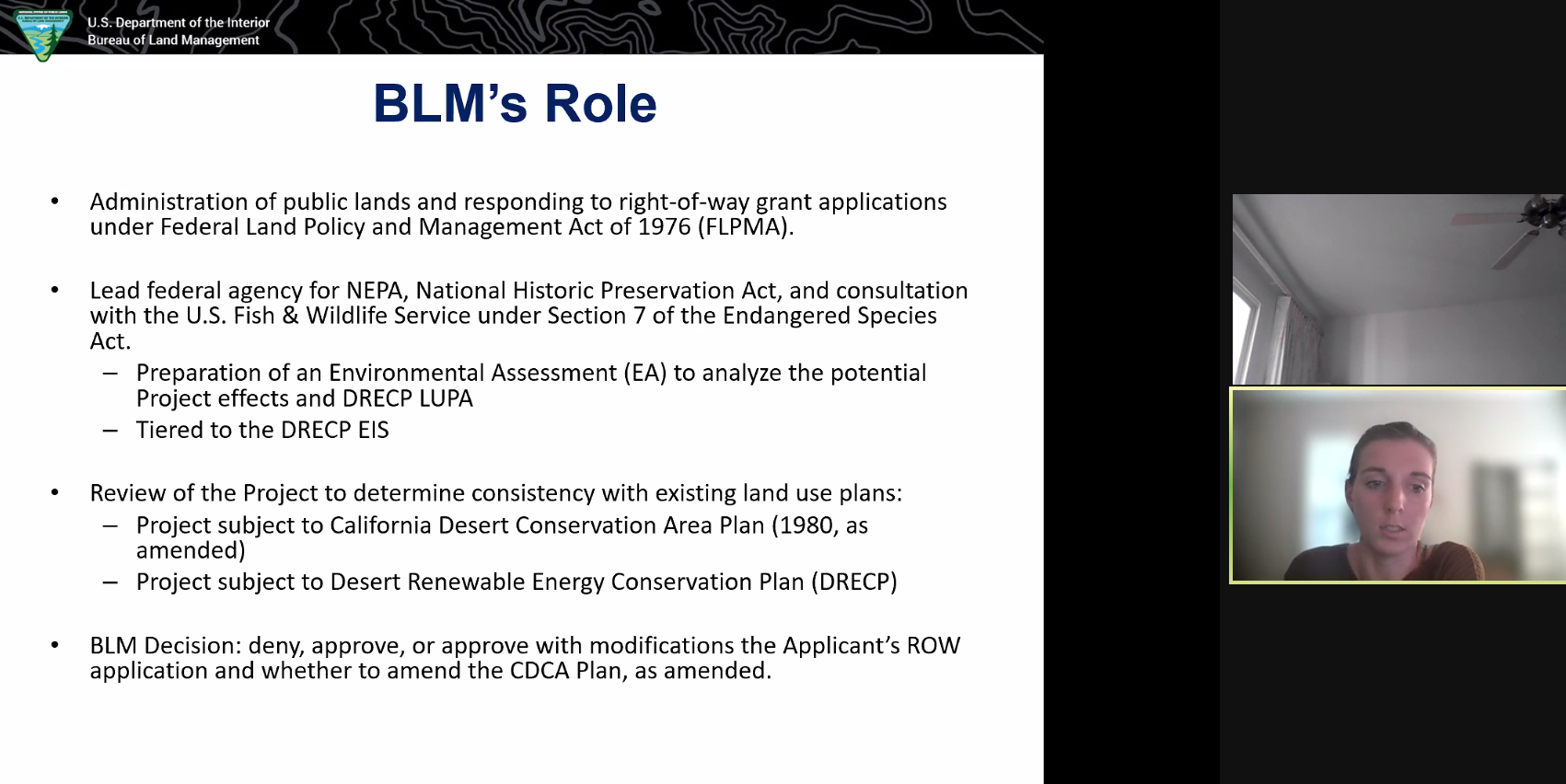
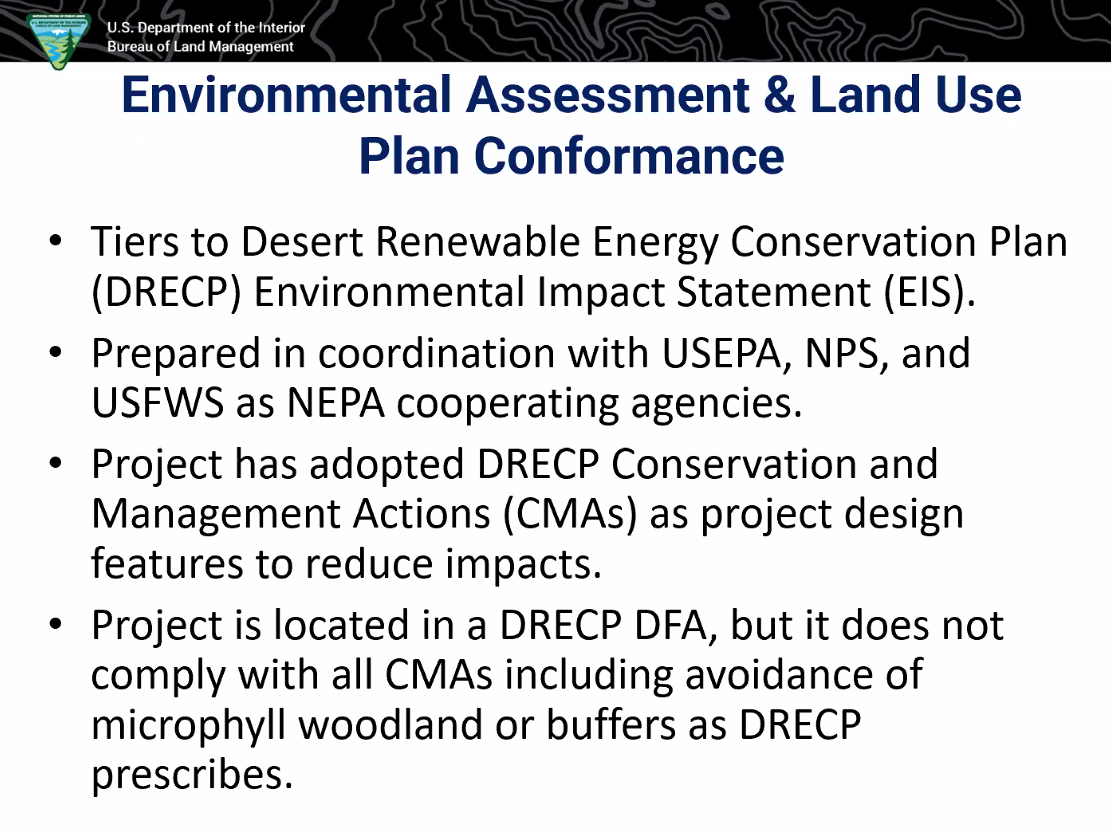
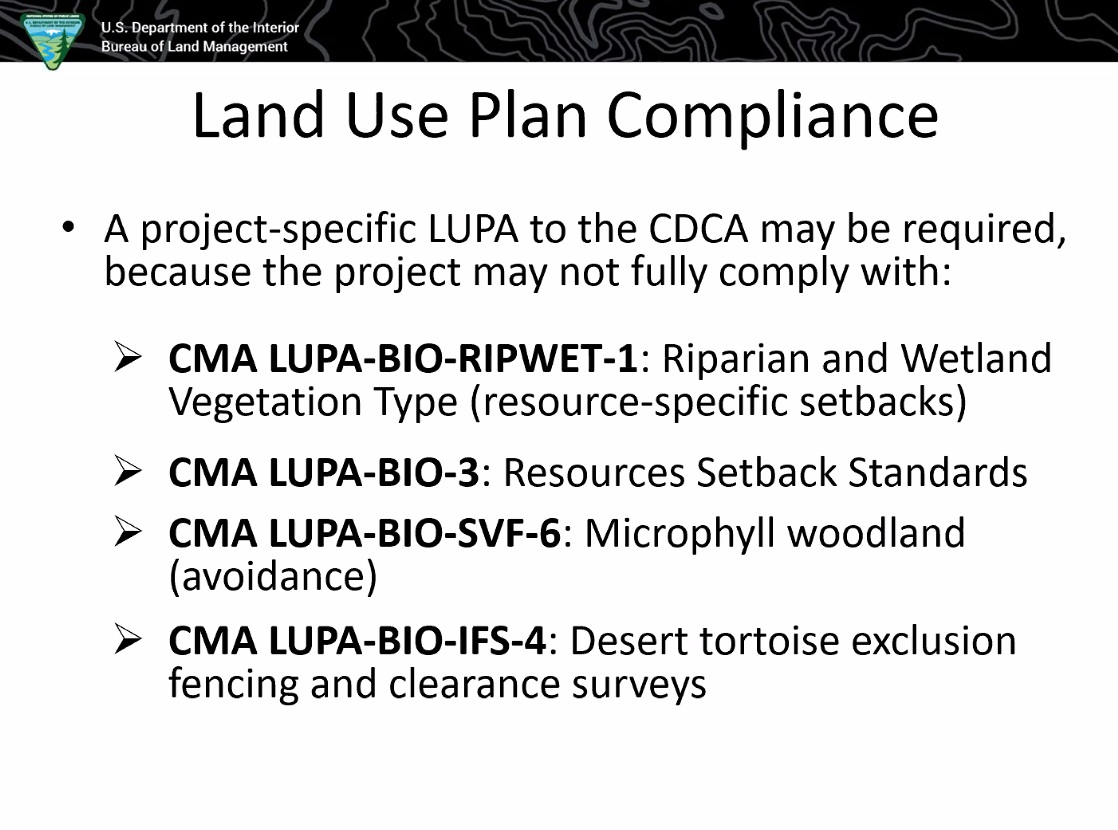
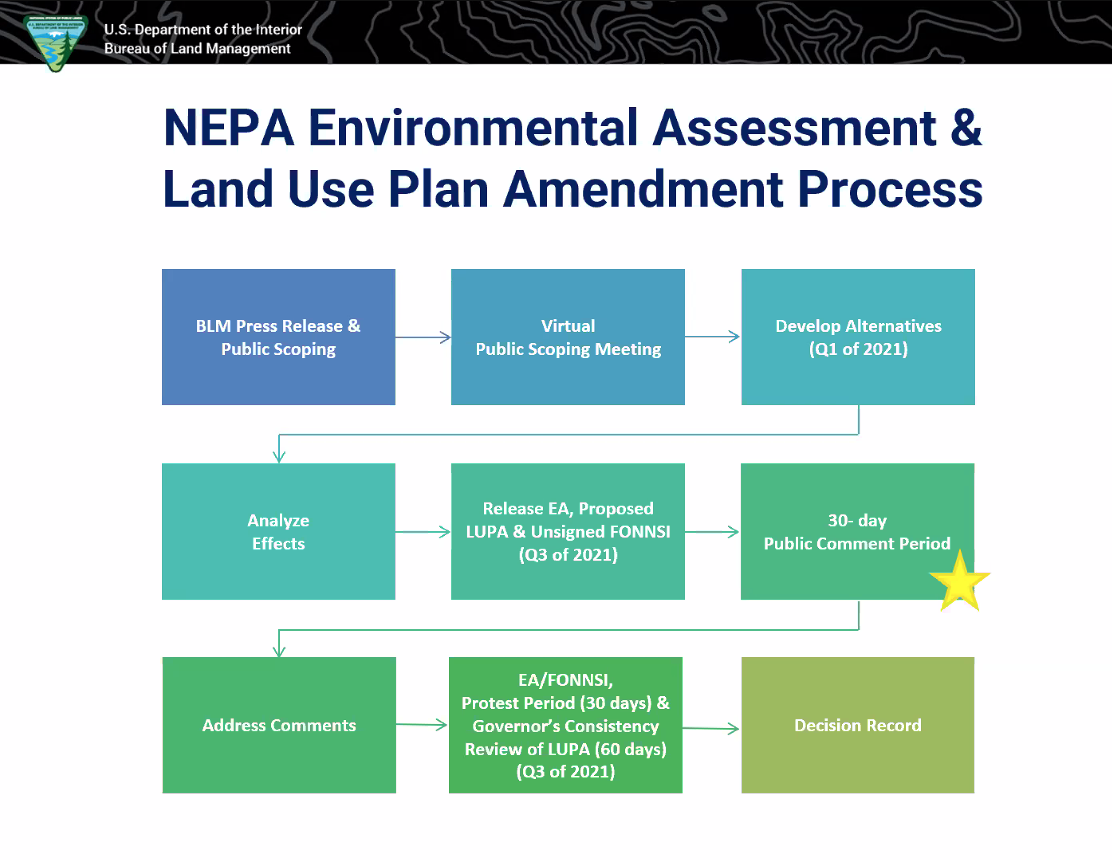
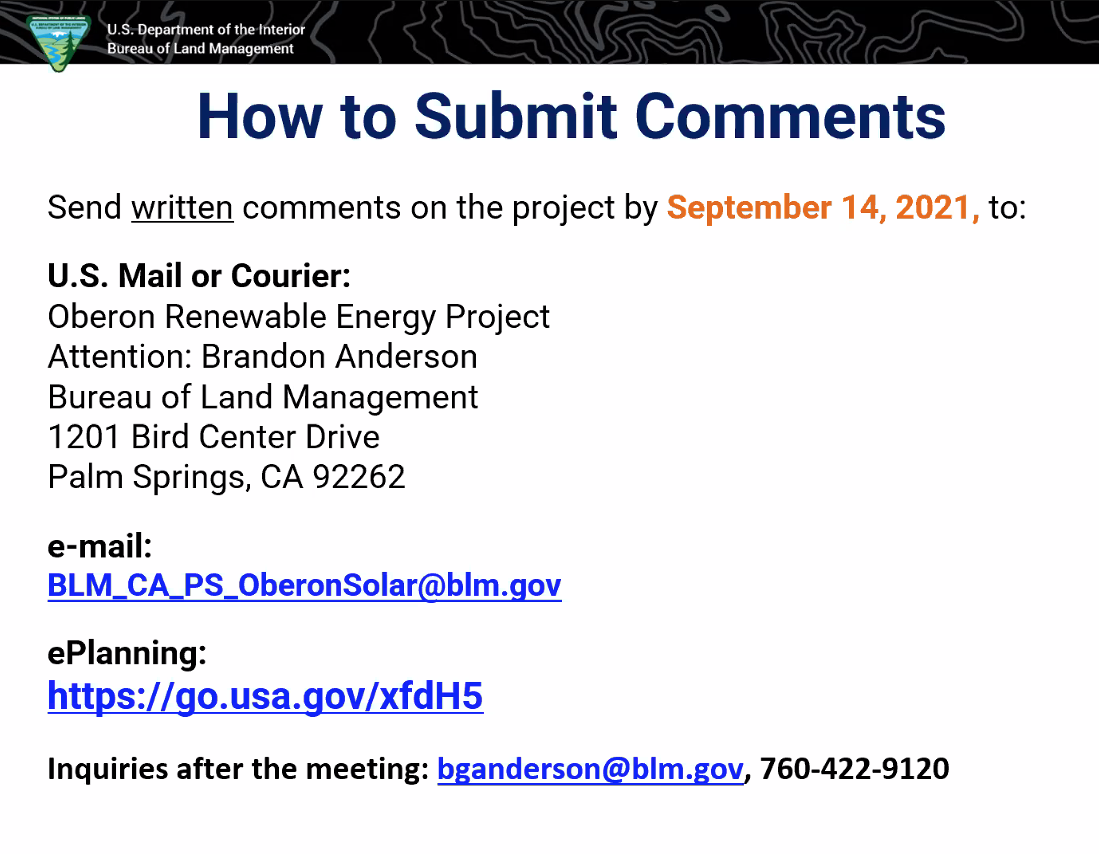
Oberon Solar Project On High Quality Desert Habitat
^Old growth woodland of desert ironwood (Olneya tesota) is widespread across the proposed site of the industrial solar energy facility. This desert needs full protection. Photos by Kevin Emmerich, September 2021.
September 4, 2021 - Chuckwalla Valley, Riverside County, CA - We visited the site of the proposed Oberon Renewable Energy Project, a photovoltaic solar project propised on one of the worst sites in Chuckwalla Valley--full of microphyll woodland, washes, a crucial connectivity corridor for wildlife, archaeological sites, Federally Threatened Mojave desert tortoise Critical Habitat, and a healthy population of Mojave fringe-toed lizards (Uma scoparia). This Colorado Desert landscape should be protected in full as an Area of Critical Environmental Concern, and not included as part of a large Development Focus Area for energy under the Desert Renewable Energy Conservation Plan (DRECP).
During the planning process for the DRECP, the environmental review for this amendment of the California Desert Conservation Area (CDCA) under the Federal Lands and Policy management Act (FLMPA), none of us were consulted about where this Development Focus Area (DFA), or "solar energy zone" should be located. This was all decided behind closed doors, with vague maps, not generally available to the public. We never agreed to this desert being developed for utility-scale solar energy sprawl.
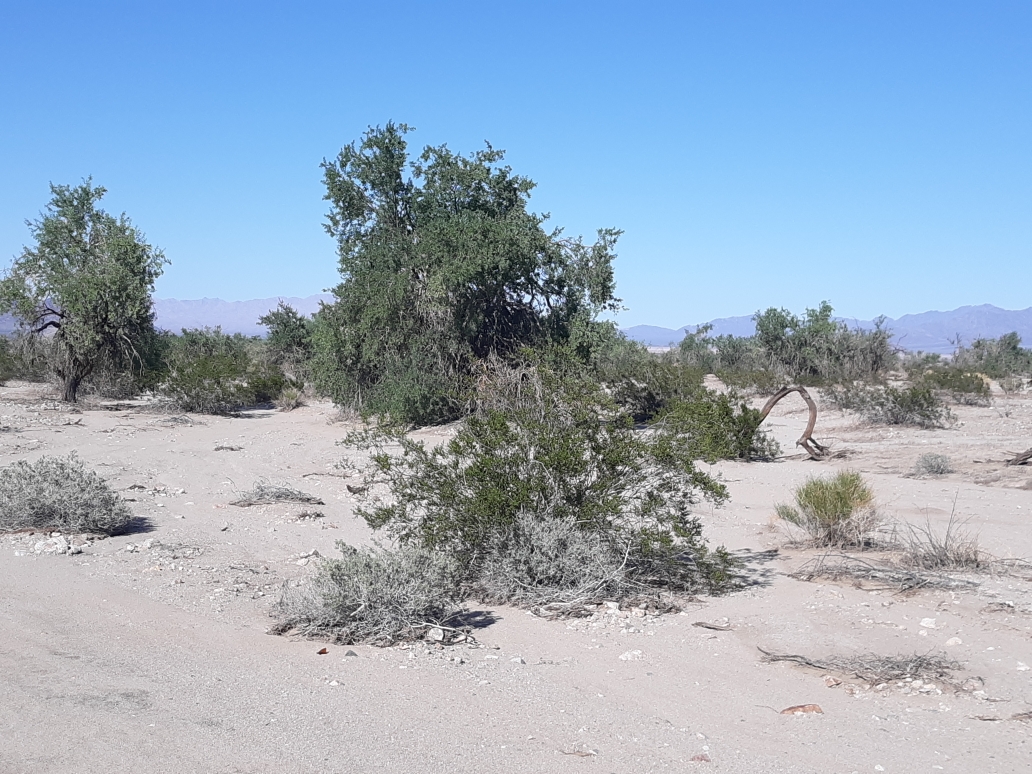
^Desert ironwood are widespread on washes and fans here. September 2021, lush from summer rains.
DRECP Weakened By Oberon Solar Project Proposal
Now the solar developer is proposing to change the Conservation Management Actions (CMAs) which are the backbone of mitigation in the DRECP, where solar developers are allowed to destroy desert habitats in California, as long as they agreed to adequately mitigate and compensate for this, and not disturb high-vaue habitats and resources on public lands.
Intersect Power wants to have the Bureau of Land Management (BLM) amend the DRECP/CDCA Plan to weaken the Conservation management Actions in order to build the solar project on more microphyll woodland and wash habitat, which was supposed to be protected in the DFAs under the DRECP.
This is why Basin and Range Watch originally questioned the promise of the DRECP from the start--a streamlined plan which allowed solar projects to be reviewed under a weaker Environmental Assessment instead of a more detailed and stricter Environmental Impact Statement under the National Environmental Policy Act (NEPA). Our predictions of weakening and streamling are coming true, unfortunately. We simply pushed for a Distributed Energy Resource alternative, which was discounted by agencies and environmental groups alike at the time.
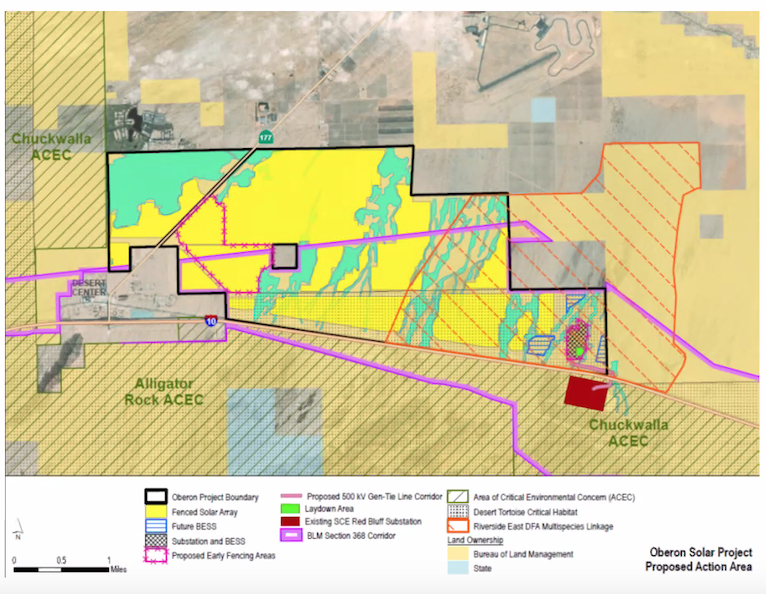
^We observed on our site visit that microphyll woodland (green) is much more widespread than this map would indicate.
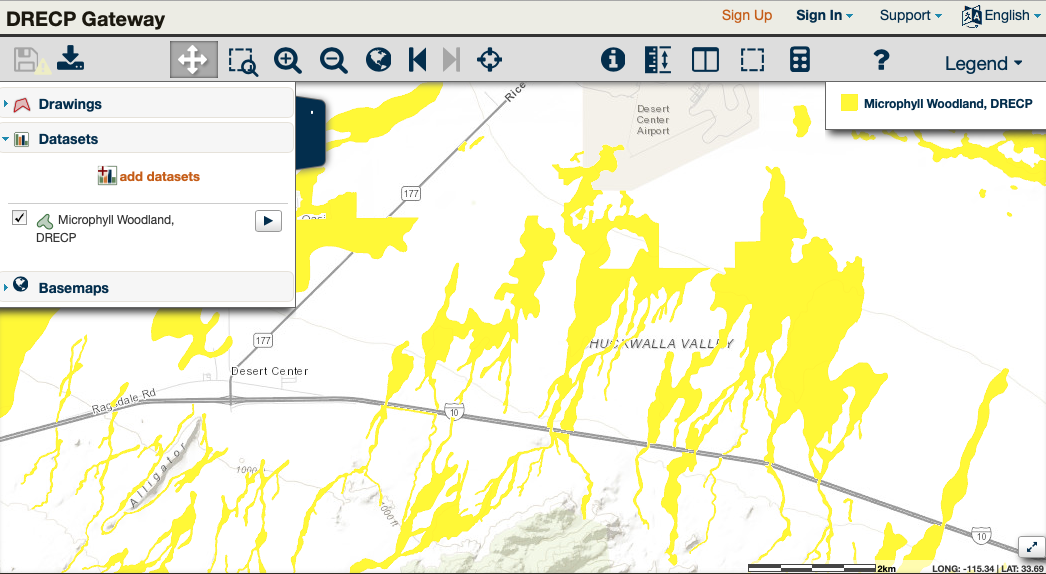
^DRECP map layer of microphyll woodland in yellow. There is a question about whether actual acreage of these trees is larger than the BLM map in the EA.
We Saw Fringe-toed Lizards Here!
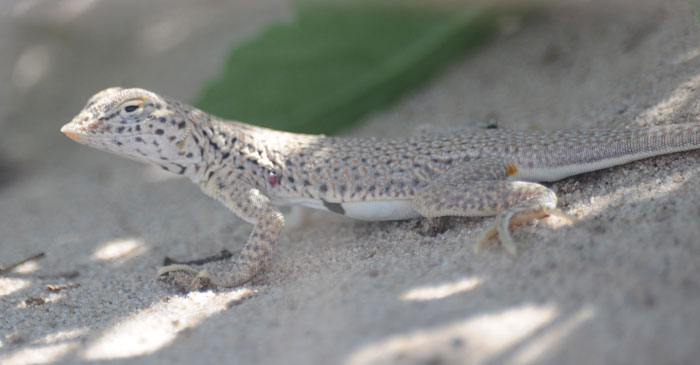
^We did not get a photo of the fringe-toed lizatd on the Oberon site, but this is out photo of a fringe-toed lizards on the Chuckwalla Valley desert to the east, now built up as the Genesis Solar Project. What is to happen to all these displaced fringe-toed lizards?
Today we saw a large adult Mojave fringe-toed lizard on the proposed projects site, run into a burrow. A huge portion of the site is most likely habitat for this declining and imperiled lizard. This desert site should be protected as an ACEC, and not have a massive utility-scale solar project built on it, destroying all habitat. The area was more firm soil and desert pavement, and shows fringe-toed lizards in the Chuckwalla Valley do not always inhabit sand dunes or sand sheets. We found fringe-toed lizards on other types of foim habitat by Ford Dry Lake as well, years ago.
Oberon Solar Project Public Comment Period and Zoom Meeting
From BLM eplanning: https://eplanning.blm.gov/eplanning-ui/project/2001226/510
IP Oberon, LLC (Proponent), a subsidiary of Intersect Power, LLC, proposes to construct, operate, maintain, and decommission a 500 megawatt (MW) solar photovoltaic (PV) electricity generating station, battery energy storage facility, electrical substation, generation intertie (gen-tie) lines and associated access roads on Bureau of Land Management (BLM) managed land in Riverside County, California (the Project). The Project is known as the Oberon Renewable Energy Project.
The prject would develop 2,700 acres of prime Colorado Desert habitat, largely undisturbed.
Participants must register for the Zoom meeting at https://us02web.zoom.us/j/82527207063. After registering, participants will receive a confirmation email with instructions, a link to join the meeting and phone numbers for those unable to join online. Zoom virtual meeting tutorials can be viewed at https://support.zoom.us/hc/en-us/articles/206618765-Zoom-video-tutorials.
The public may submit written comments on the issues, potential impacts, alternatives, and mitigation measures presented in the EA by visiting the BLM’s ePlanning website at https://go.usa.gov/xfdH5. The BLM will consider all substantive comments received by Tuesday, Sept. 14, in finalizing the EA.
https://www.blm.gov/press-release/blm-welcomes-public-input-oberon-solar-project
Lead Contact Information
Name:
Brandon G. Anderson, BLM Palm Springs and South Coast Field Office
Email:
bganderson@blm.gov
Phone:
(760) 422-9120
Wildlife Connectivity Should be Protected
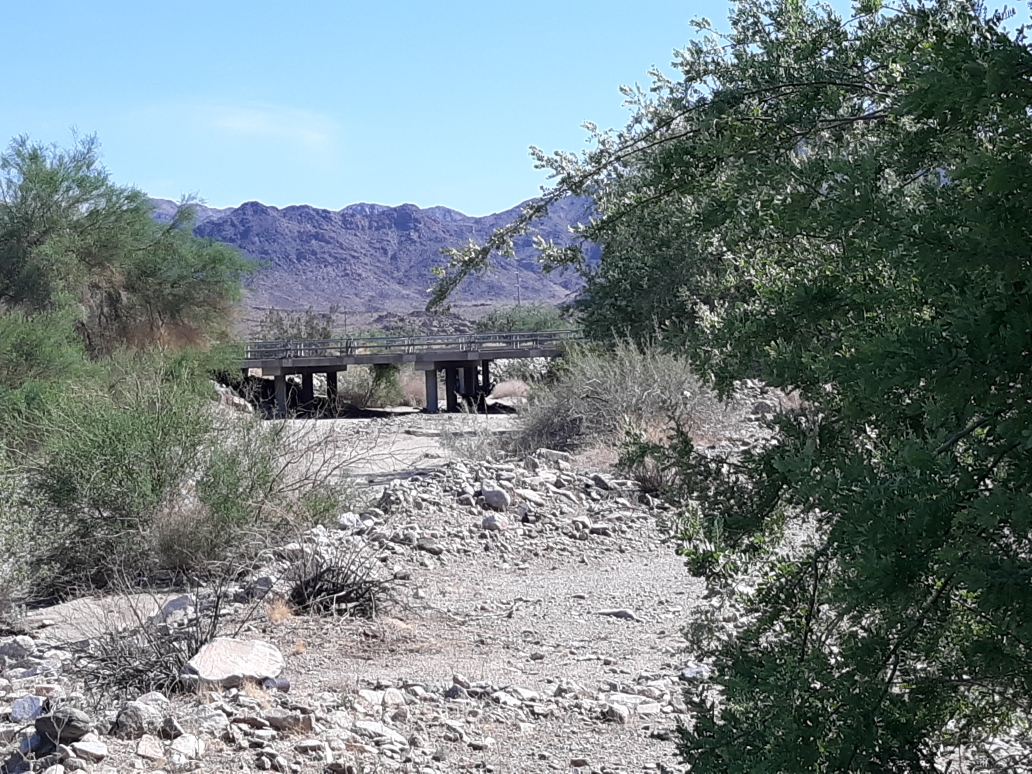
^Lush desert ironwood trees and wash with underpass on the I-10, proposed Oberon solar project site.
Our site visit revealed that the Oberon Solar Project site actually has excellent wildlife connectivity across Chuckwalla Valley, through the I-10 highway, with three large highway undercrossings, where tortoise, burro deer, and bighorn sheep would have no problem crossing under the highway on these large wash underpasses. Summer thunderstorms bring a lot of flash floods, and the highway architects understood this and built very large, wide, deep highway undercrossings.
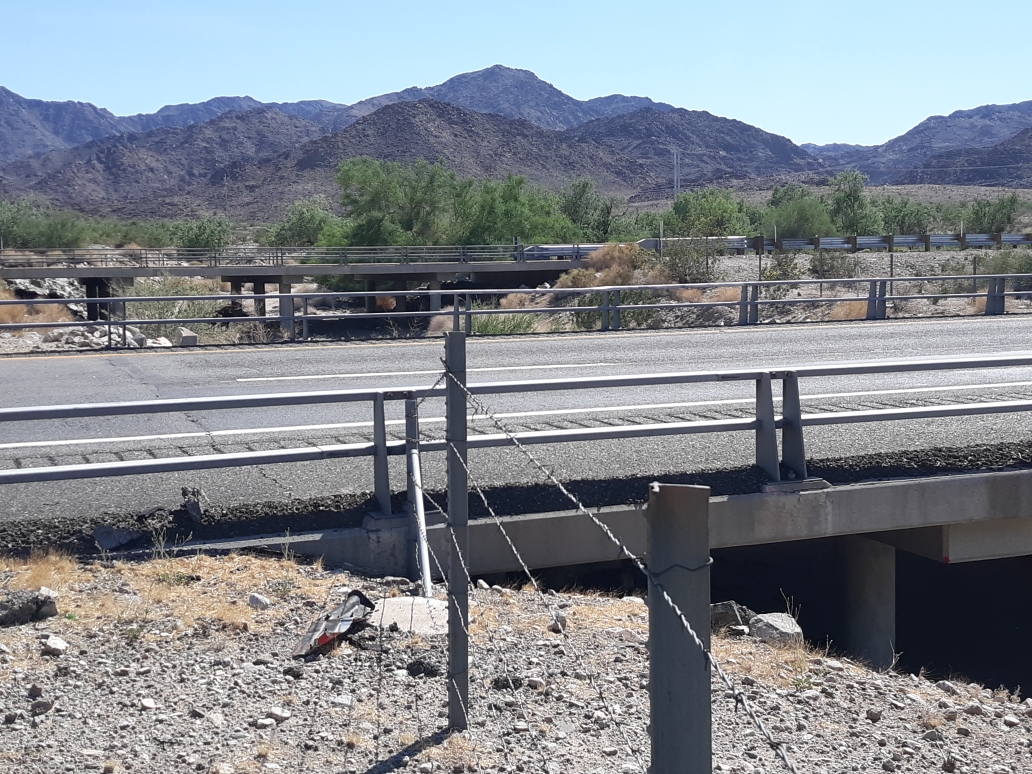
^Connectivity under the I-10 with large wash overpasses, looking south towards the Chuckwalla Mountains.
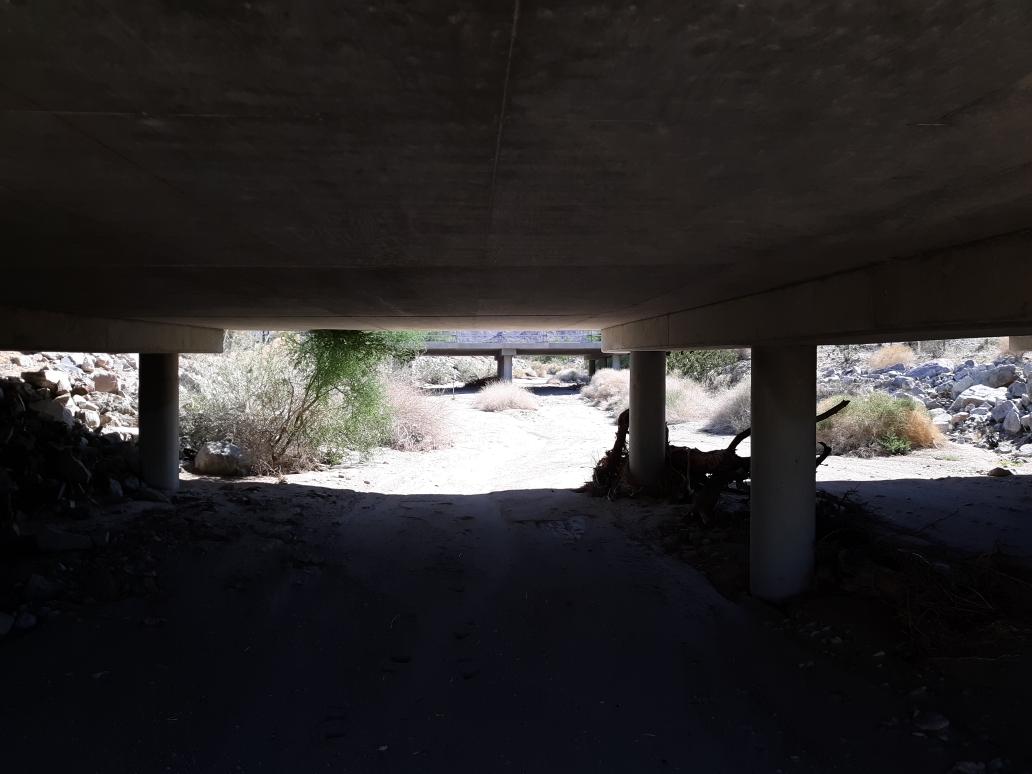
^It is easy for a human to walk under the highway, in wash underpasses that provide wildlife connectivity.
Therefore, the designated tortoise Critical Habitat on the north side of I-10 is well-connected to Critical Habitat and protected SCEC tp the south of the hghhway. This appears to be excellent tortoise habitat on the propised Oberon Project site, wirh dense, old-growth microphyll woodland, including desert ironwood trees. Mojave desert tortoises dne on fallen ironwood seed pods, so this looks to us like excellent tortoise habitat.
September 2021 Site Visit
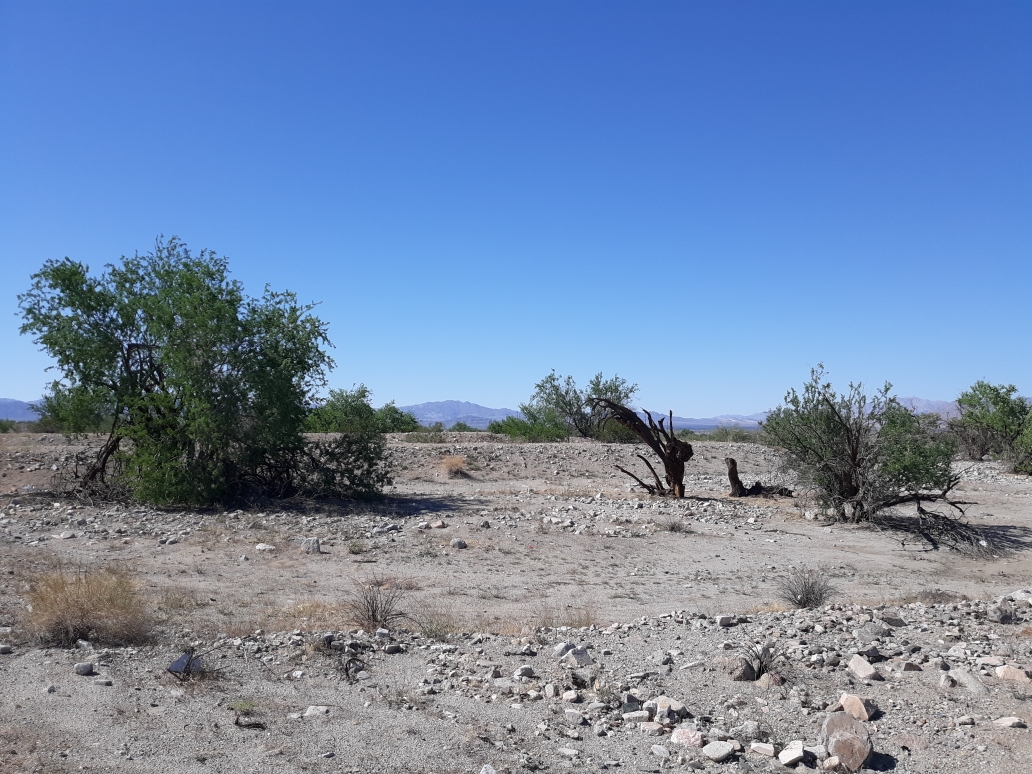
^Desert ironwoods in wash, on the site of the proposed Oberon Solar Project.
Take a walk around the dense microphyll washes after intense summer rains in the Chuckwalla Valley, on the site of the proposed Oberon Solar Project. The ironwood trees are lush and green, recovering from drought years well.
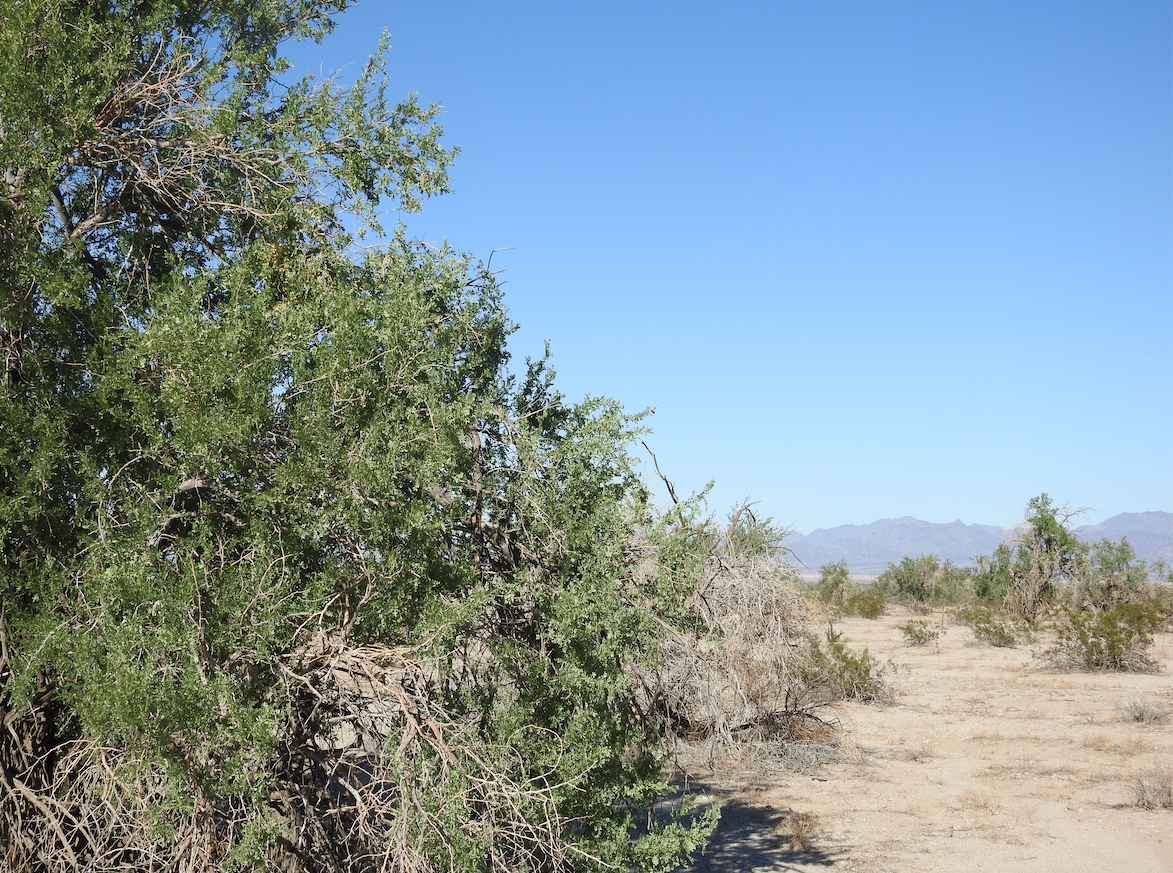
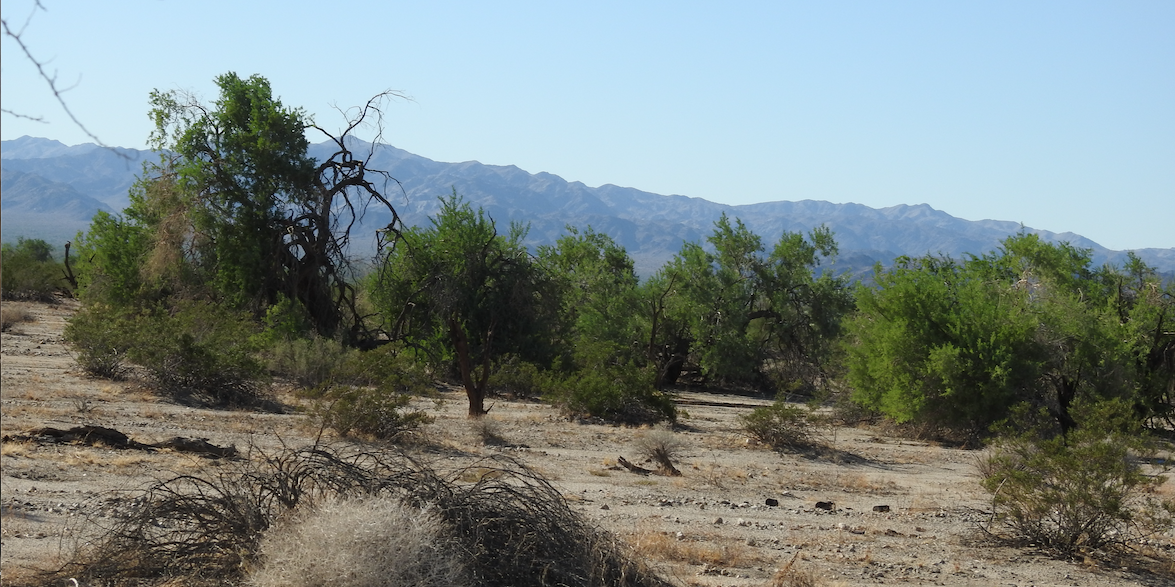
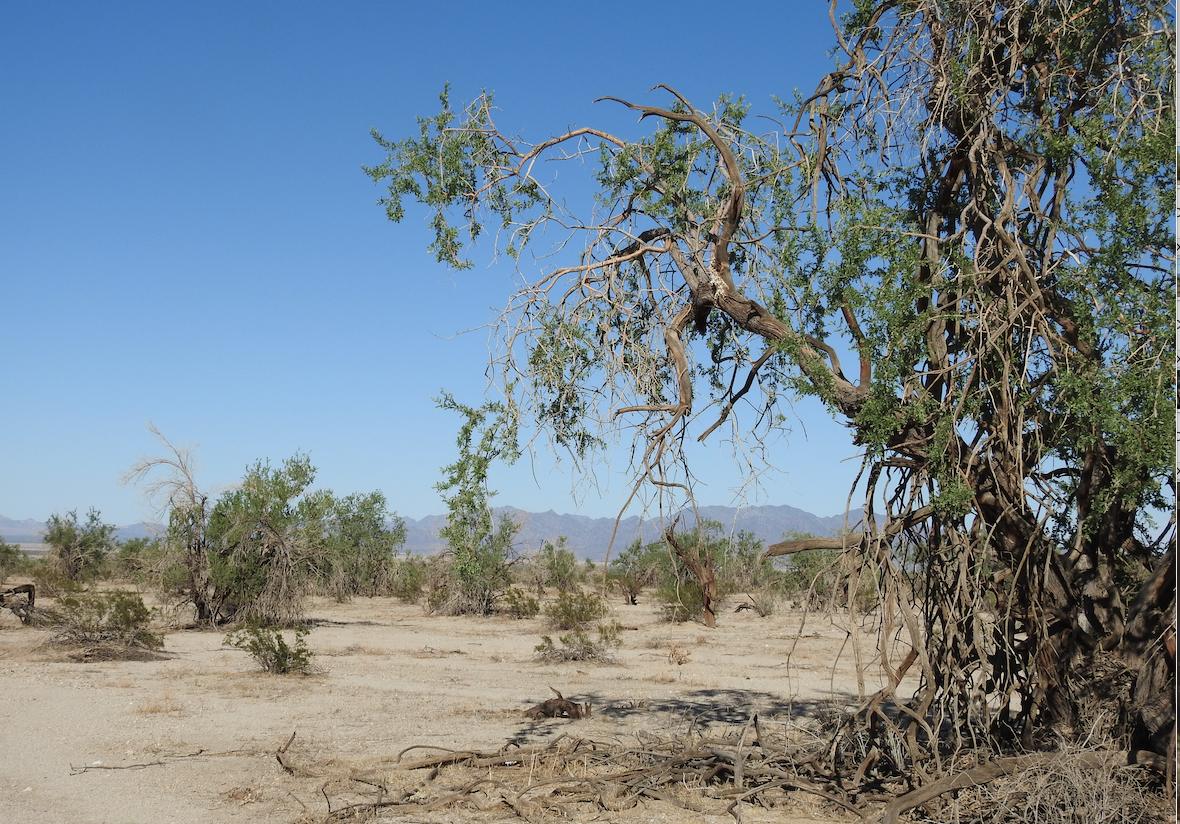
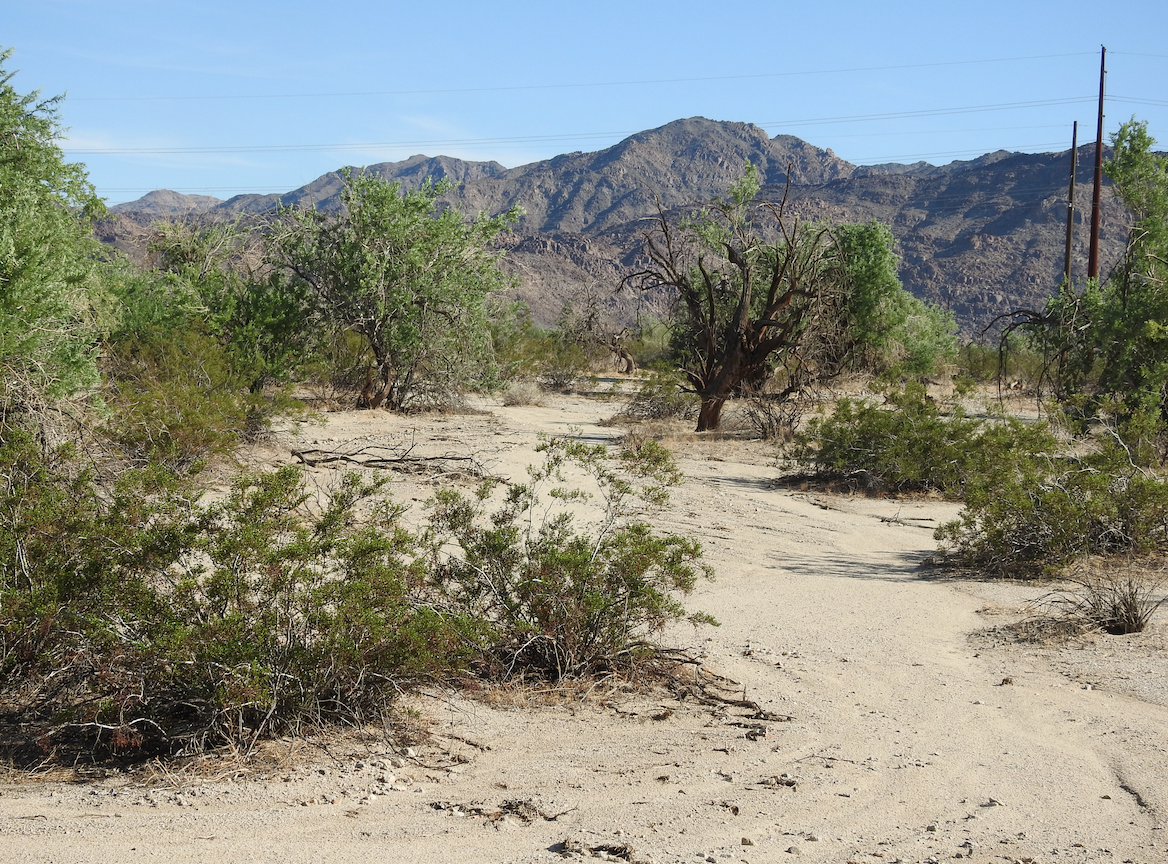
^An existing transmission line shows what more may be built through these microphyll washes for solar development.
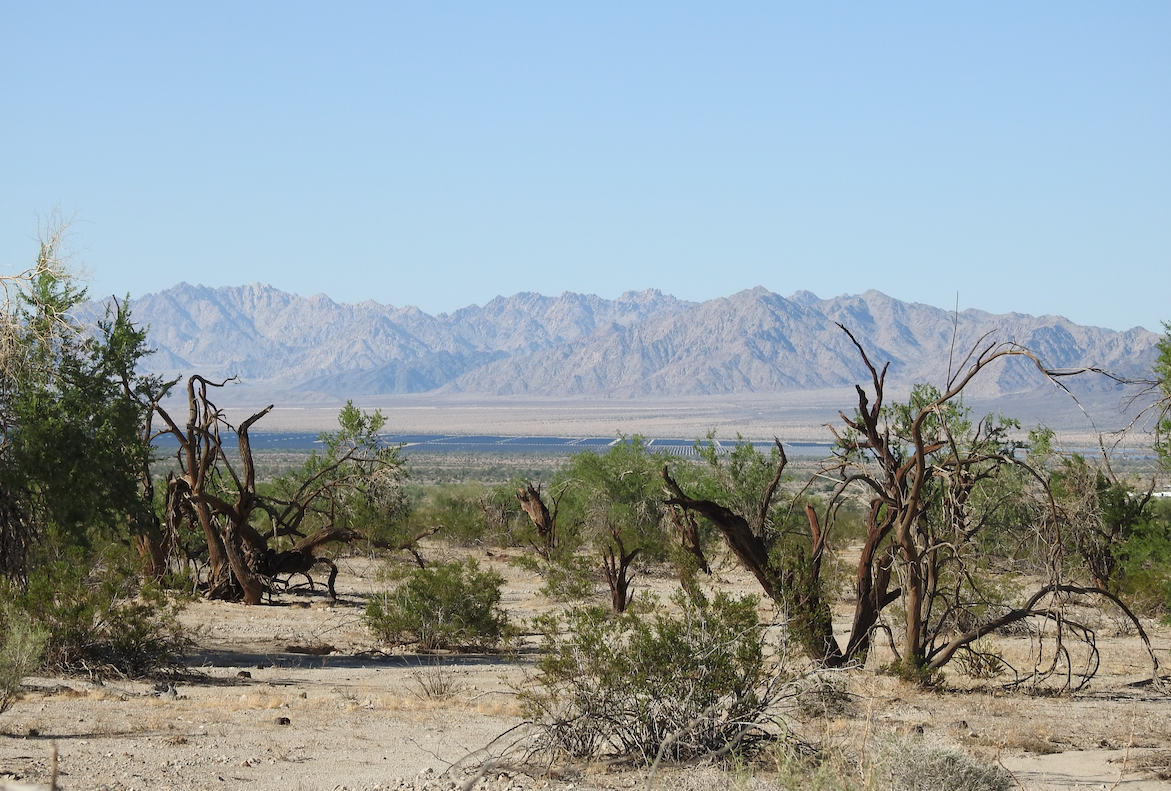
^Desert Sunlight Solar Farm lies in the background of this ironwood forest on the proposed Oberon Solar Project, looking across Chuckwalla Valley towards the Palen-McCoy Mountains.
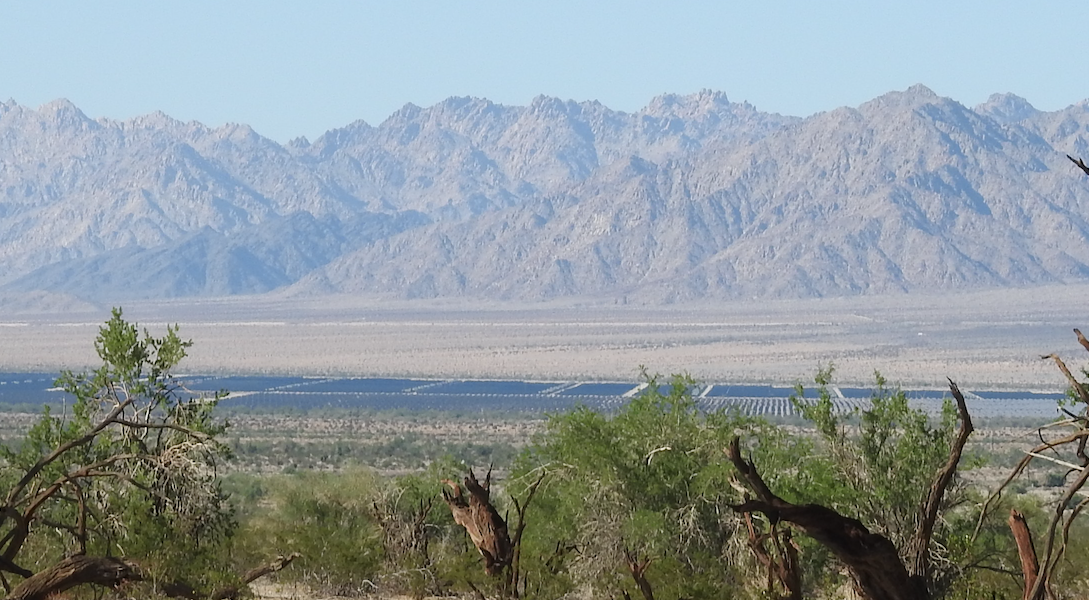
^View of solar projects in operation.
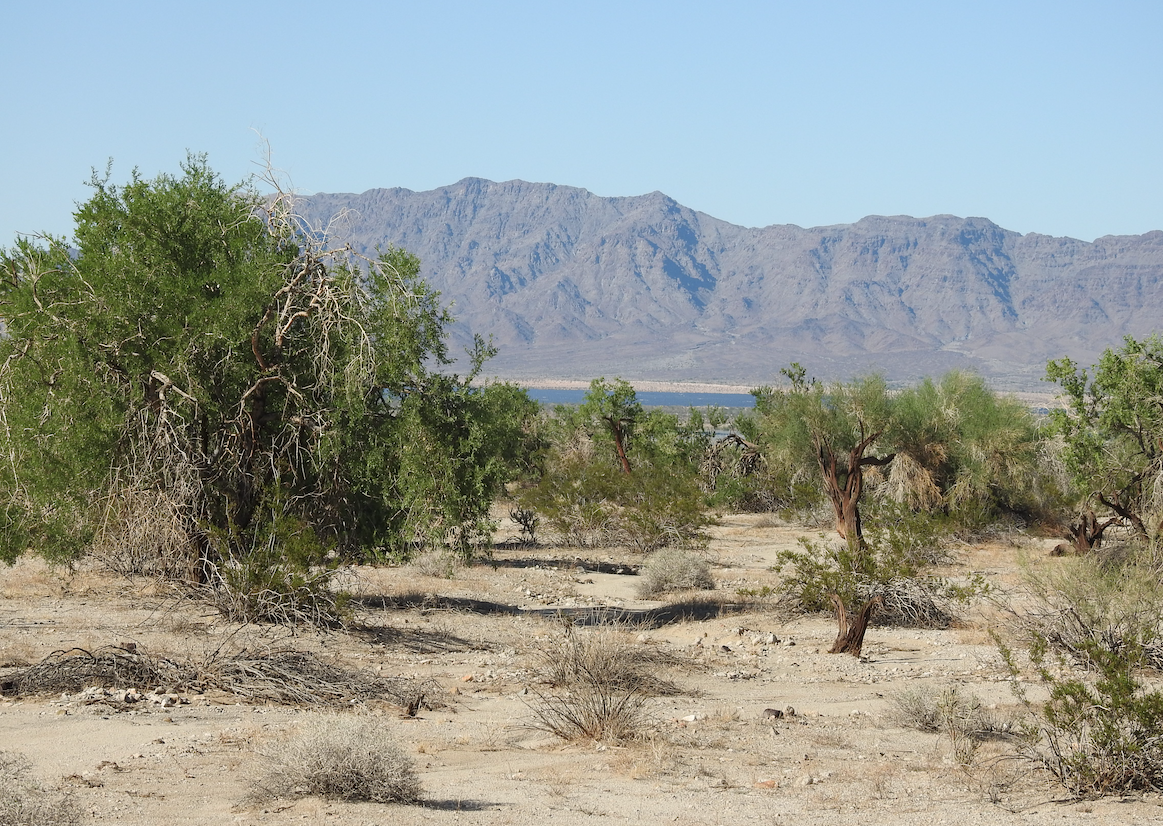
^Not a lake, but an existing utility-scale photovoltaic project in the distance, as seen from the proposed Oberon Solar Project.
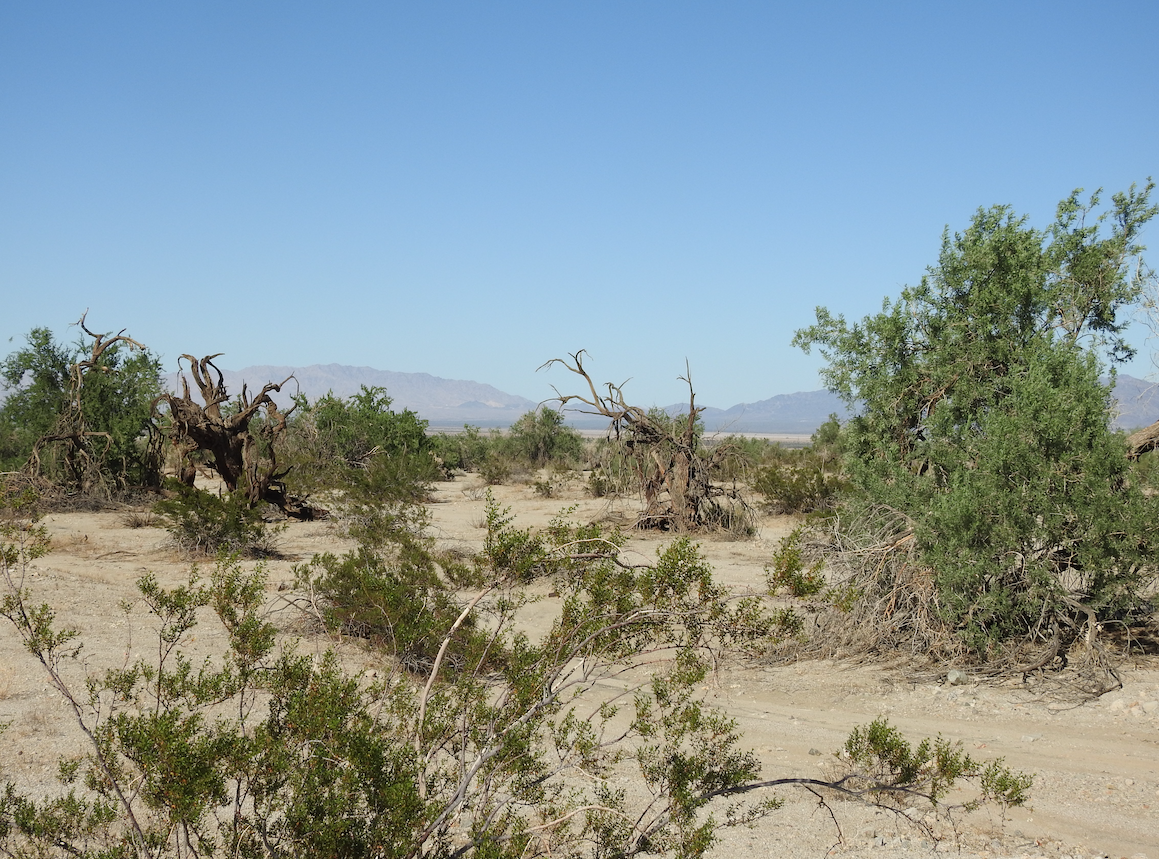
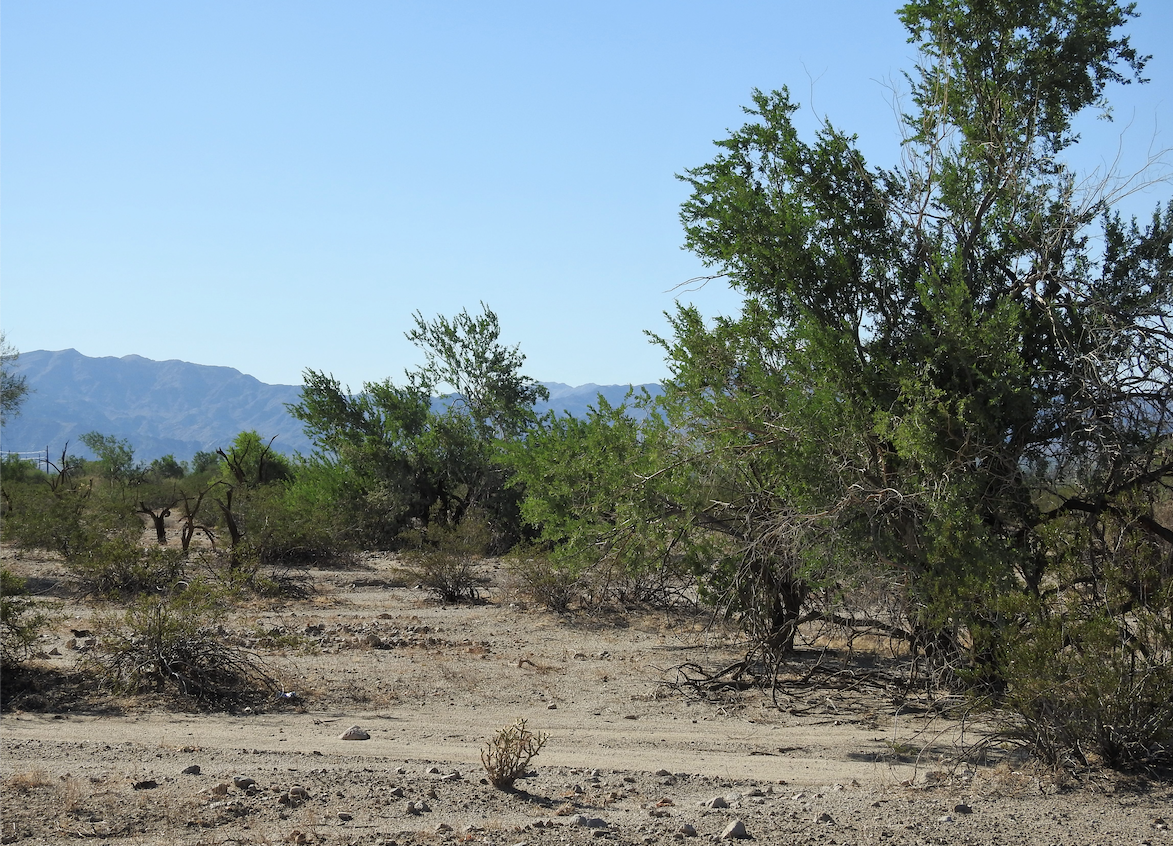
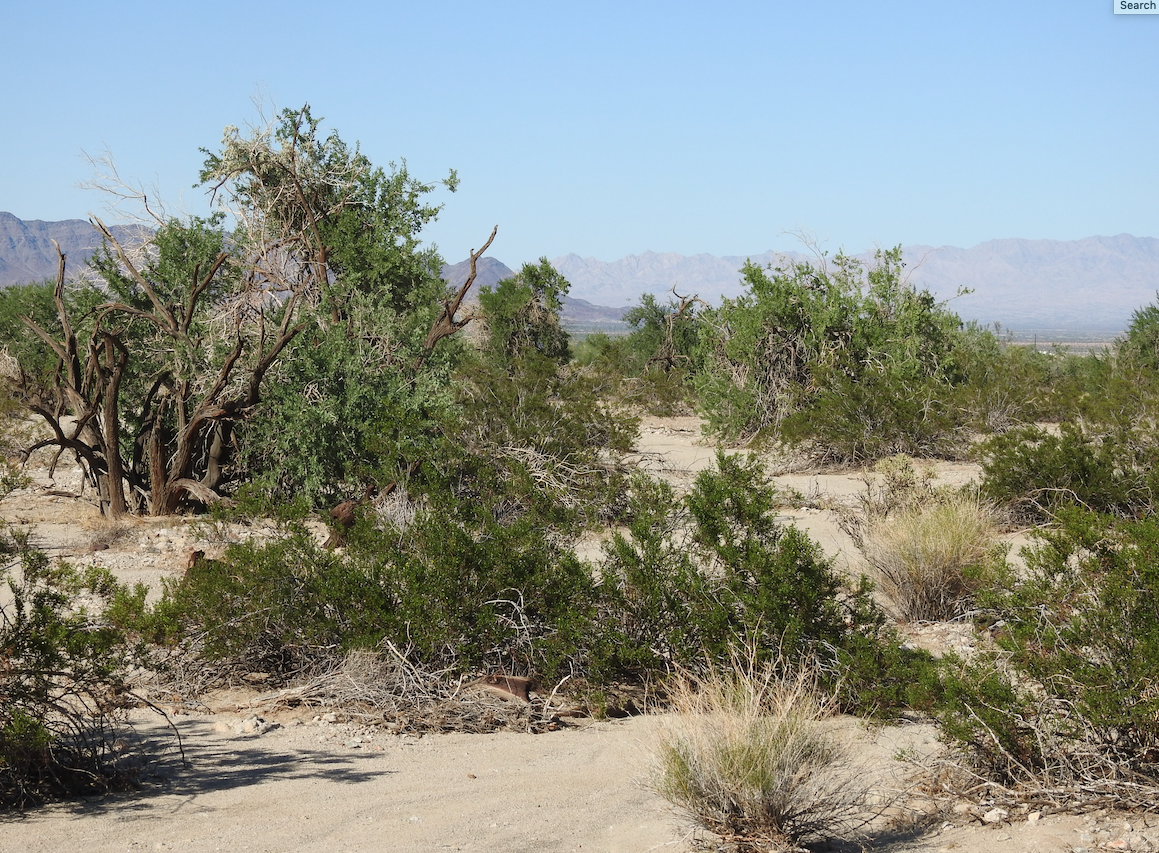
^Green desert ironwoods and creosote after drenching July and August monsoon rains. September 2021.
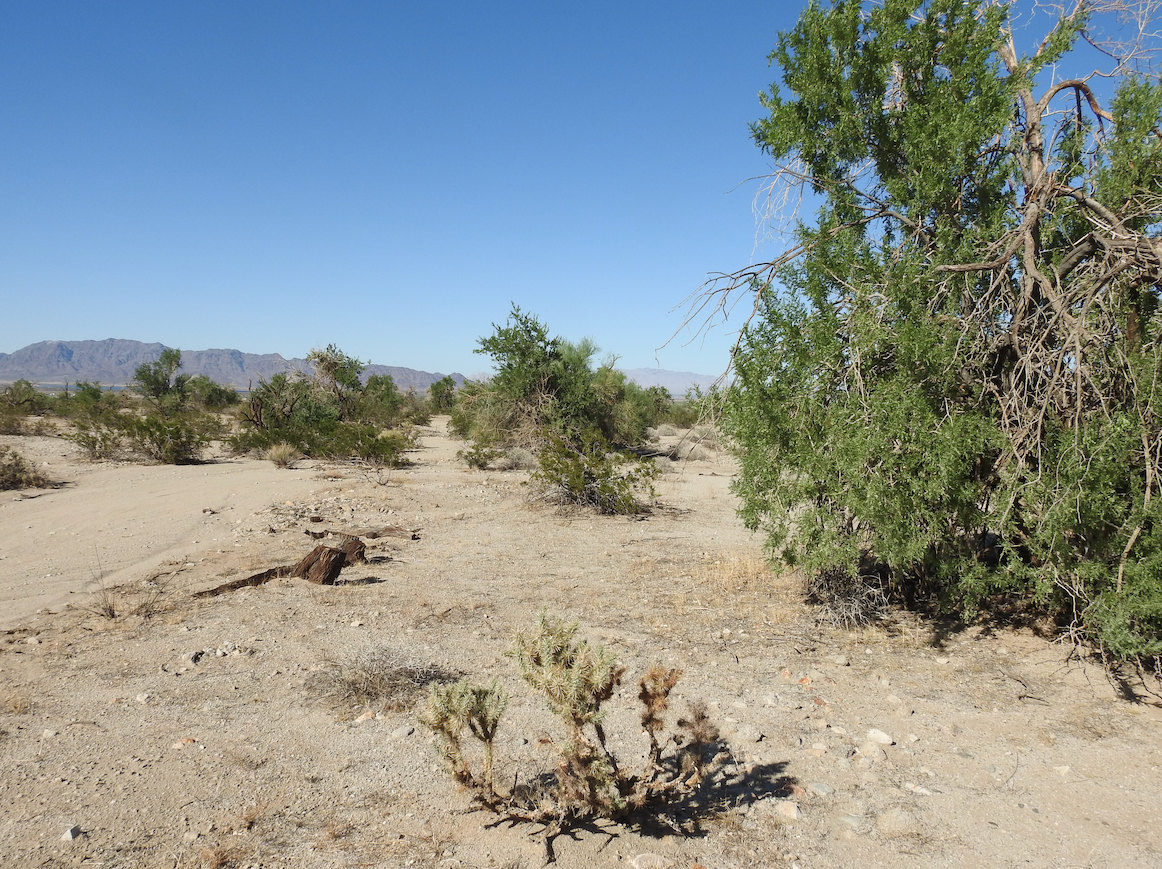
^A cholla cactus recovering from drought, in the widespread ironwood habitat.
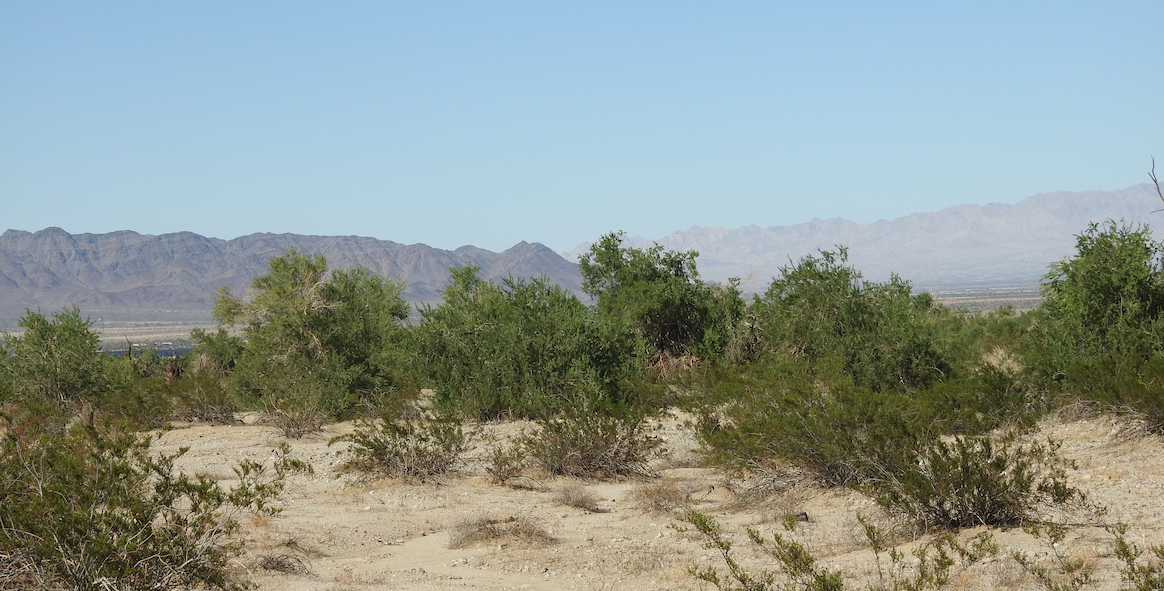
The Oberon site is higher than much of the Chuckwalla Valley and Riverside East Development Focus Area. Therefore it is excellent desert tortoise and burro deer habitat and should be conserved.
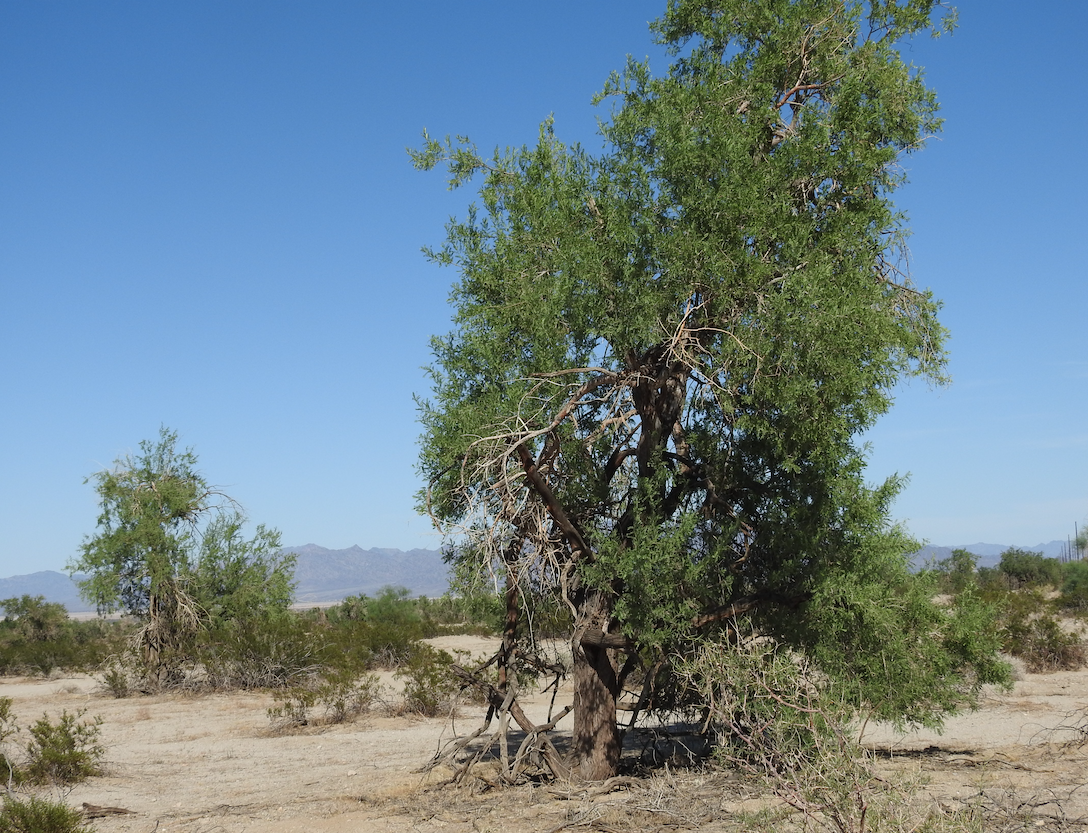
^There are some truly giant old-growth ironwoods on this site, up to 40 feet tall, we estimate, with 2-feet diameter basal trunk.
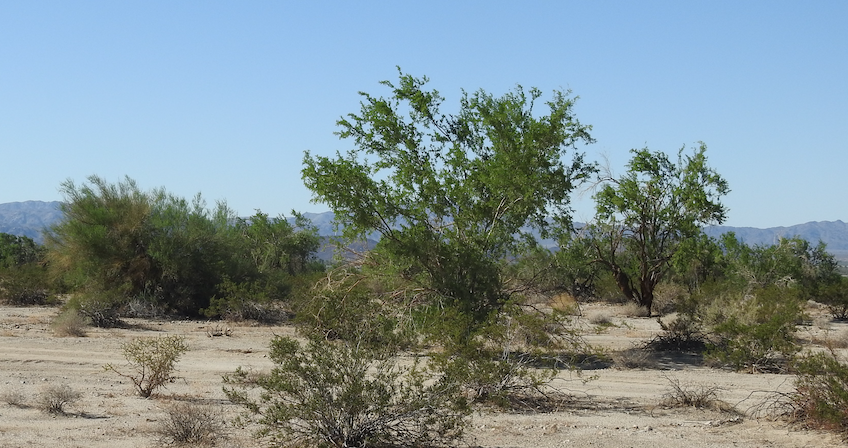
^Palo verdes and ironwoods make up much of the microphyll woodland here, also known as Desert dry wash habitat.
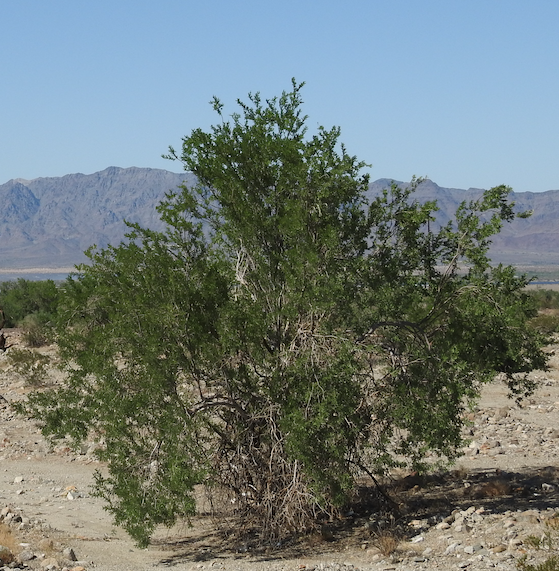
^Desert ironwood trees.
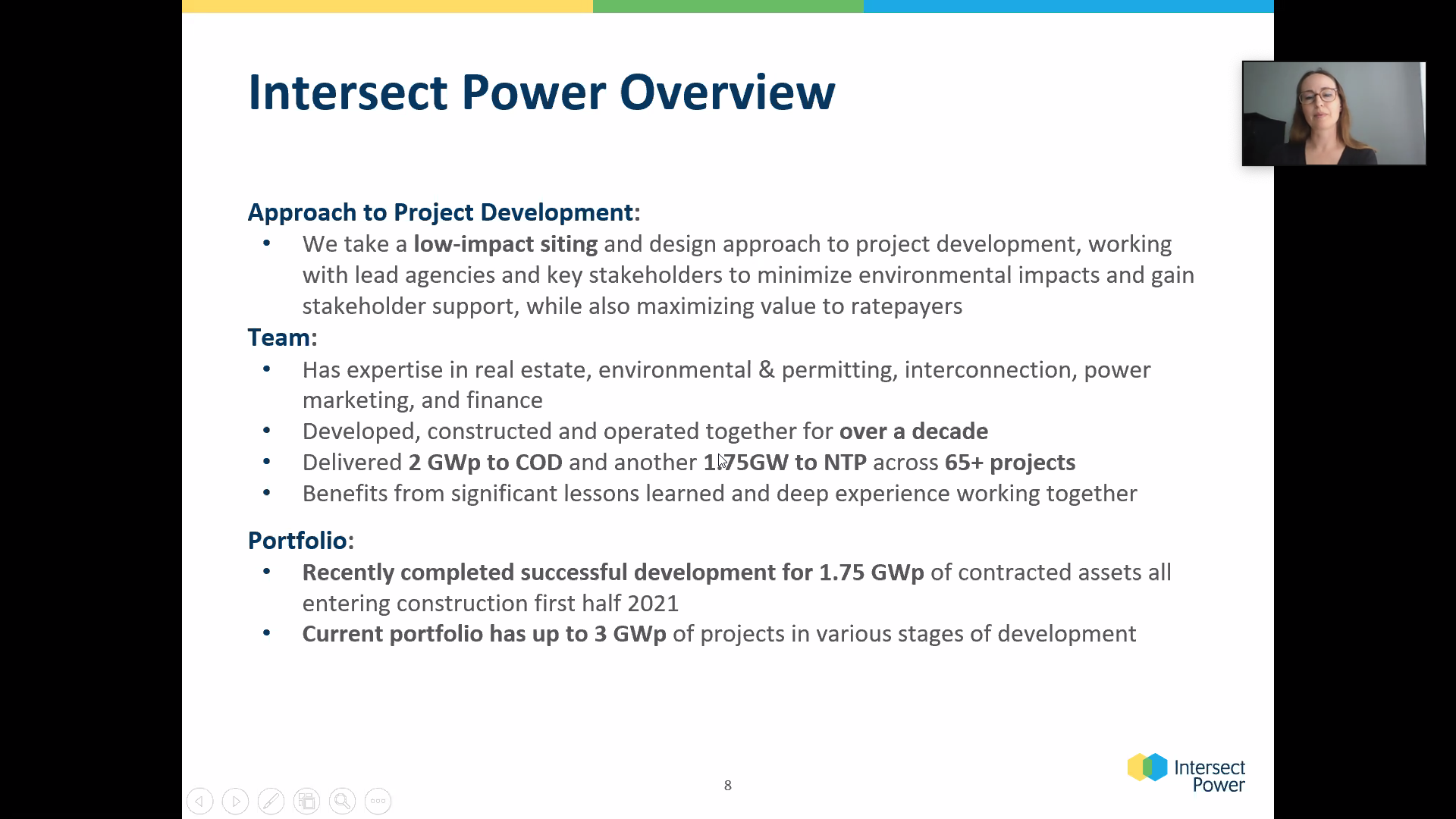
^Screenshot from an earlier BLM online scoping meeting in late 2020.
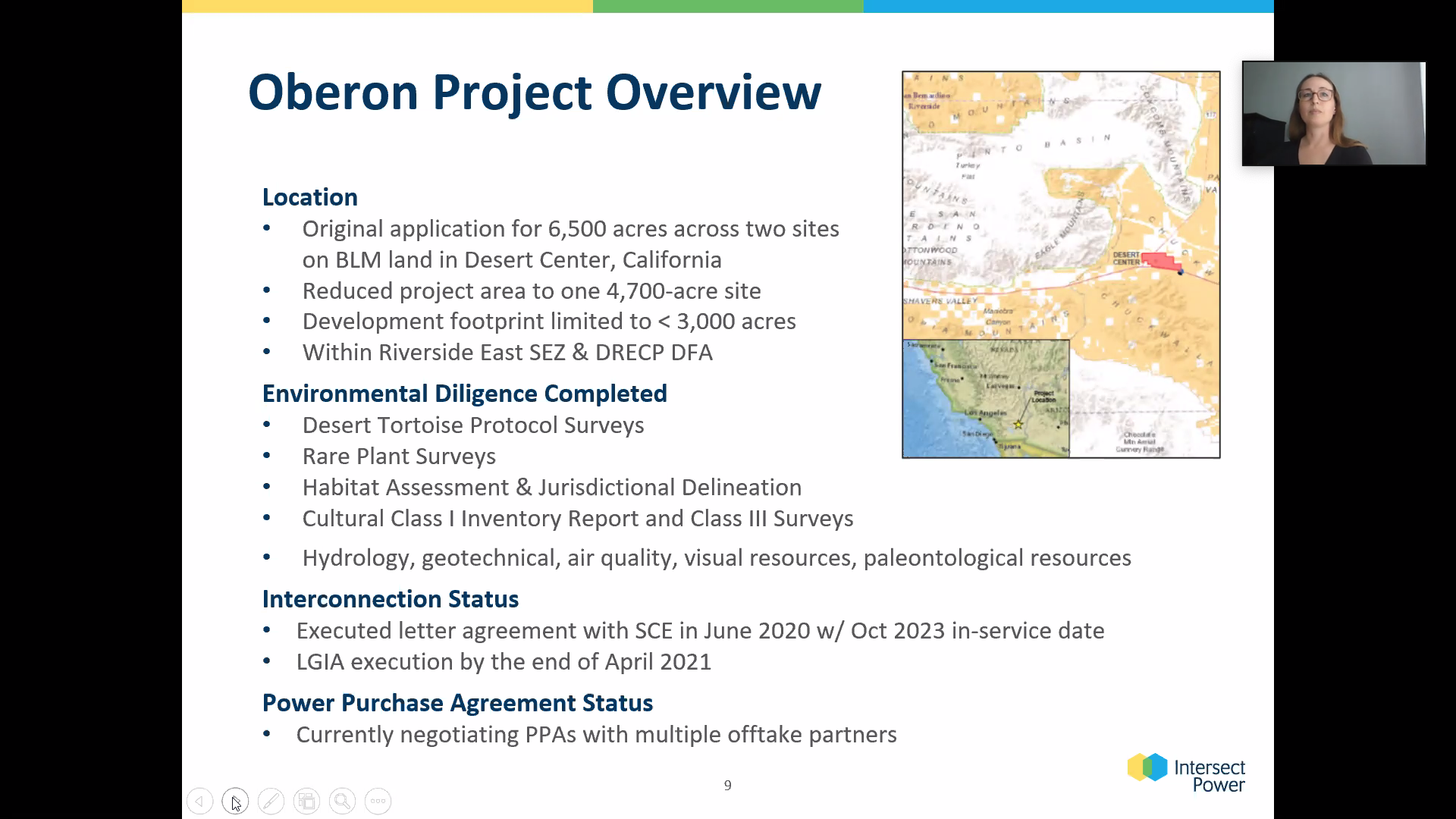
^Scoping meeting.
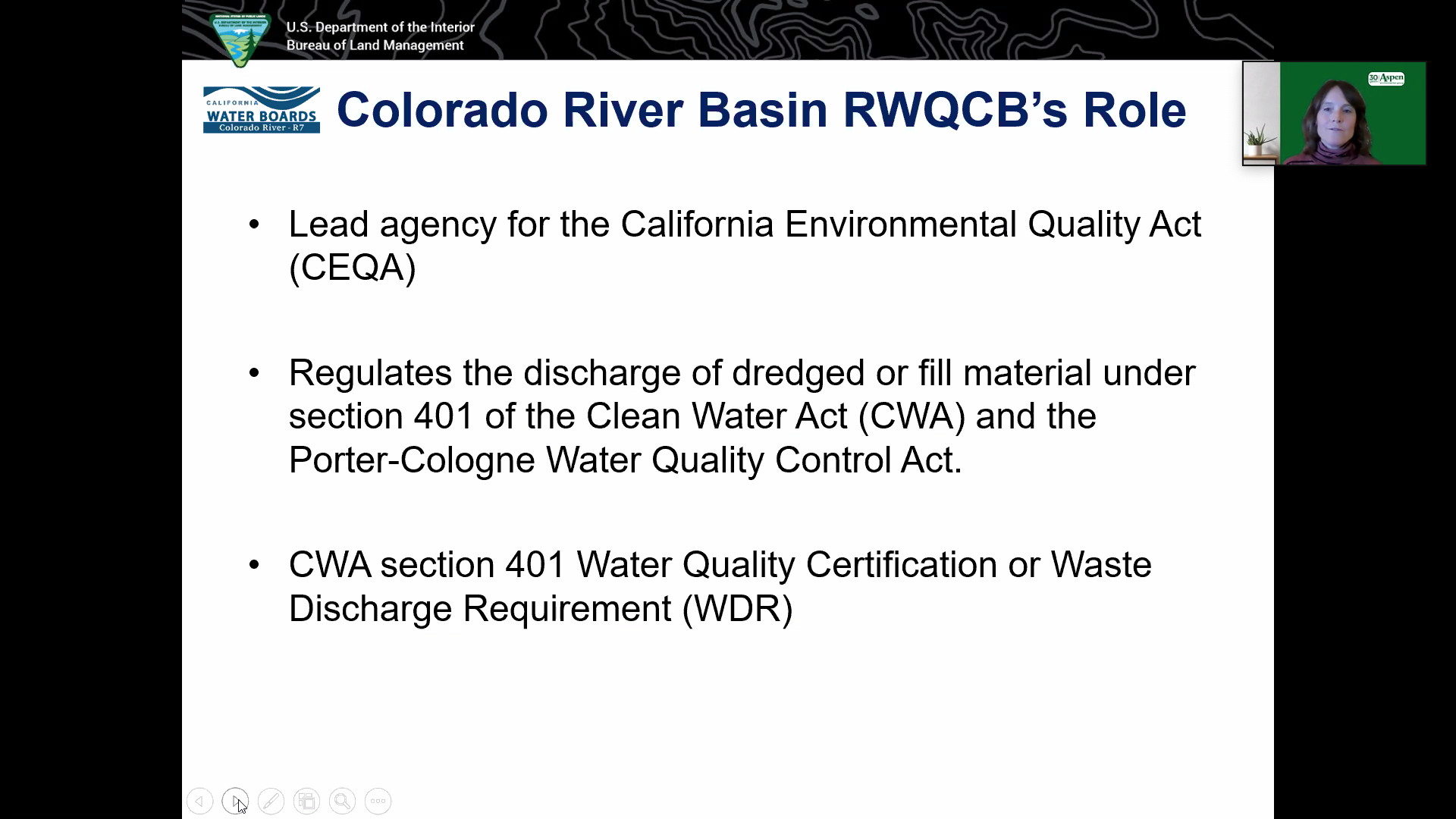
^Scoping meeting.
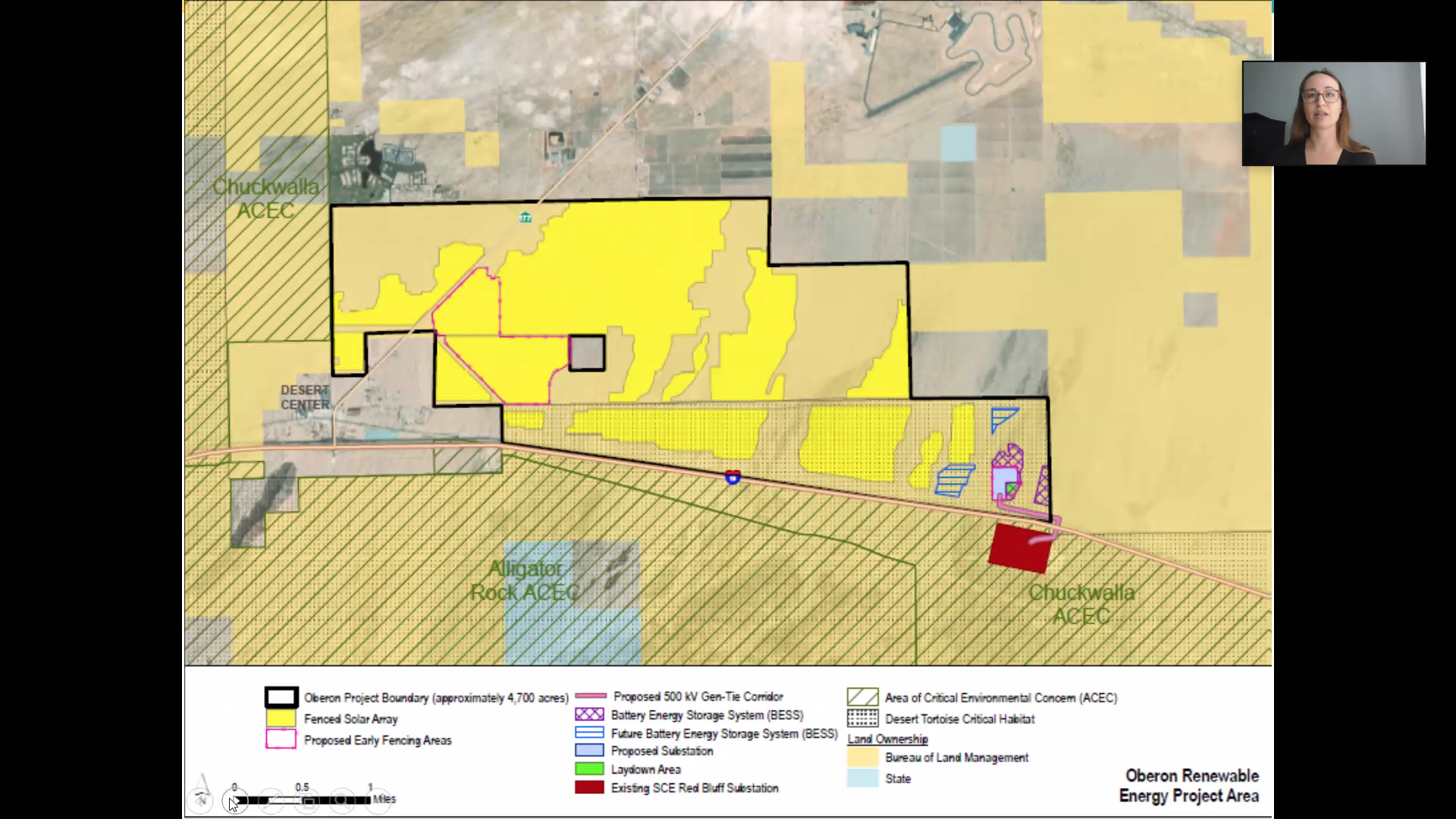
^Scoping meeting map.
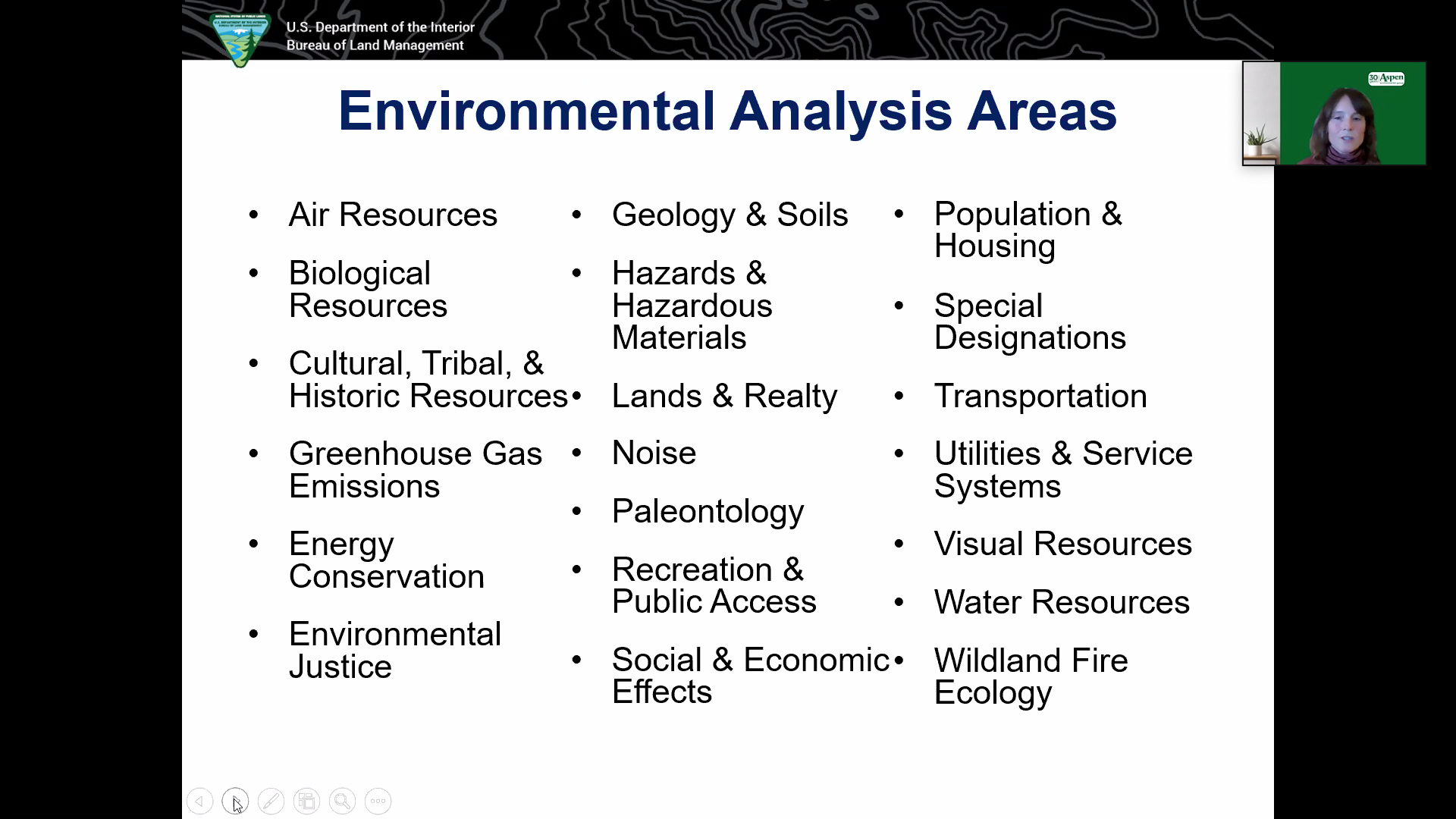
^Scoping meeting.
HOME.....Chuckwalla Valley.....Palen Solar Project.....DRECP
